Polycythemia etiology. Polycythemia Vera: Symptoms, Causes, Diagnosis and Treatment Options
What are the key symptoms of polycythemia vera. How is polycythemia vera diagnosed. What are the main treatment options for polycythemia vera. What complications can arise from untreated polycythemia vera. Who is most at risk of developing polycythemia vera.
Understanding Polycythemia Vera: A Rare Blood Cancer
Polycythemia vera (PV) is an uncommon type of blood cancer that originates in the bone marrow. It is characterized by the overproduction of red blood cells, which leads to a thickening of the blood. This increased blood viscosity can result in impaired blood flow and potentially serious complications.
PV typically develops slowly, often going undetected for years before diagnosis. Many cases are discovered incidentally during routine blood tests performed for unrelated reasons. While rare, polycythemia vera can be life-threatening if left untreated. However, with proper medical management, many individuals with PV can experience relief from symptoms and a reduction in complications.

Recognizing the Symptoms of Polycythemia Vera
The symptoms of polycythemia vera can be subtle and easily overlooked. Some individuals may not experience any noticeable signs at all. However, when symptoms do occur, they can include:
- Headaches
- Dizziness
- Fatigue
- Blurred vision
- Itchiness, particularly after warm baths or showers
- Numbness, tingling, or weakness in the extremities
- Abdominal fullness or discomfort due to an enlarged spleen
- Unusual bleeding, such as nosebleeds or bleeding gums
- Joint pain, often in the big toe
- Shortness of breath, especially when lying down
Can these symptoms be mistaken for other conditions? Indeed, many of these symptoms can be attributed to various other health issues, which is why proper diagnosis by a healthcare professional is crucial.
Unraveling the Causes of Polycythemia Vera
At the heart of polycythemia vera lies a genetic mutation that affects blood cell production. This mutation disrupts the body’s normal regulation of blood cell counts, leading to an overproduction of red blood cells, and sometimes white blood cells and platelets as well.

Is polycythemia vera hereditary? While the exact cause of the gene mutation responsible for PV is unknown, it is generally not considered an inherited condition. This means that having a family member with PV does not necessarily increase your risk of developing the disease.
The JAK2 Gene Mutation
Research has identified a specific mutation in the JAK2 gene as a key player in the development of polycythemia vera. This mutation is present in approximately 95% of PV cases. The JAK2 gene provides instructions for making a protein that is crucial in controlling blood cell production. When mutated, it leads to uncontrolled cell growth and division.
Risk Factors for Developing Polycythemia Vera
While polycythemia vera can occur at any age, certain factors may increase an individual’s likelihood of developing the condition:
- Age: PV is more common in adults between 50 and 75 years old
- Gender: Men are slightly more likely to develop PV than women
- Ethnicity: PV appears to be more prevalent in certain ethnic groups, though more research is needed to confirm this
Do these risk factors guarantee the development of polycythemia vera? No, having one or more of these risk factors does not necessarily mean an individual will develop PV. Conversely, the condition can also occur in people without any known risk factors.
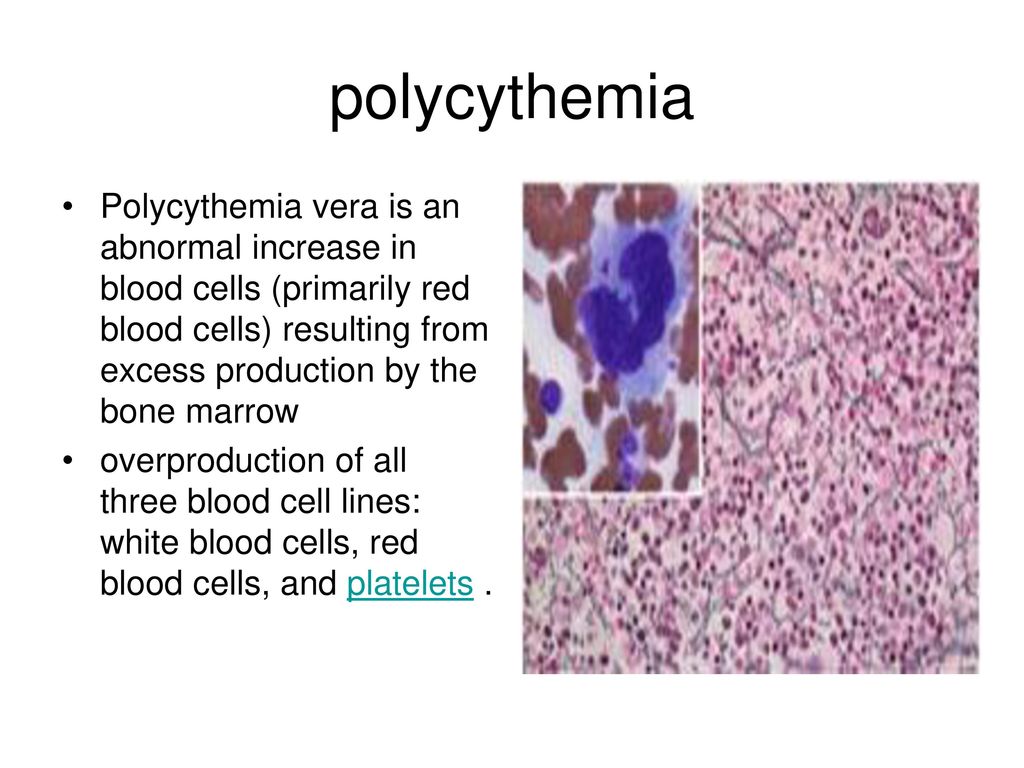
Diagnosing Polycythemia Vera: A Multi-Step Process
Diagnosing polycythemia vera typically involves a combination of physical examinations, blood tests, and bone marrow biopsies. The diagnostic process may include:
- Complete blood count (CBC): This test measures the levels of red blood cells, white blood cells, and platelets in the blood.
- Erythropoietin level test: Low levels of this hormone can indicate PV.
- Genetic testing: To check for the JAK2 mutation and other genetic markers associated with PV.
- Bone marrow biopsy: This procedure involves taking a small sample of bone marrow to examine under a microscope.
- Imaging tests: Such as ultrasound or CT scans to check for an enlarged spleen.
How accurate are these diagnostic tests for polycythemia vera? While these tests are generally reliable, the diagnosis of PV is based on a combination of clinical findings, laboratory results, and genetic testing. In some cases, additional tests or follow-up evaluations may be necessary to confirm the diagnosis.
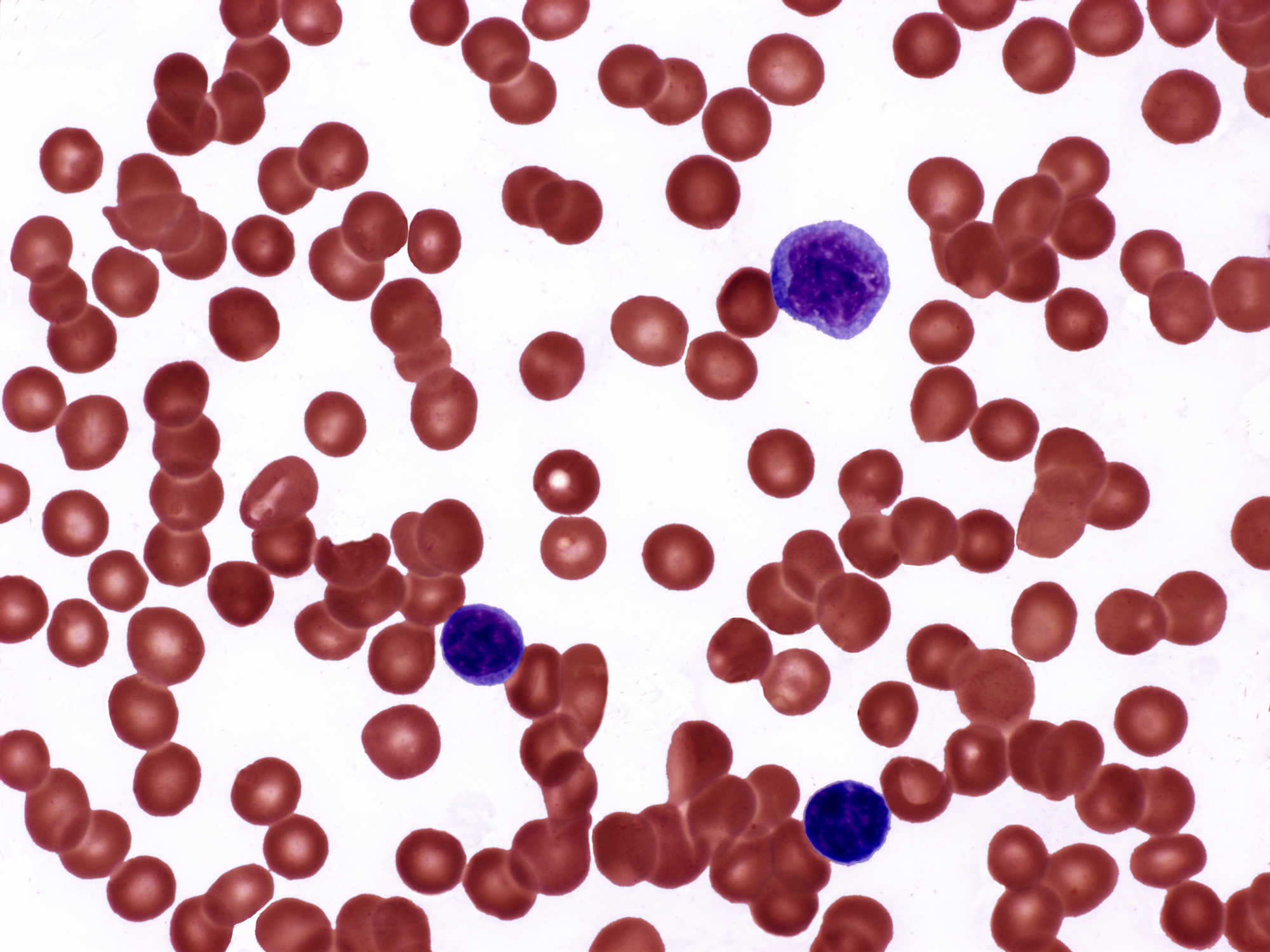
Treatment Approaches for Polycythemia Vera
The treatment of polycythemia vera is aimed at reducing the risk of complications and managing symptoms. The specific treatment plan may vary depending on the individual’s age, overall health, and the severity of the condition. Common treatment options include:
Phlebotomy
Phlebotomy, also known as bloodletting, is often the first-line treatment for PV. This procedure involves removing a certain amount of blood from the body to reduce the overall red blood cell count. How often is phlebotomy performed? The frequency of phlebotomy sessions can vary, but typically ranges from once every few weeks to once every few months, depending on the individual’s response to treatment.
Medications
Several medications may be prescribed to manage PV:
- Hydroxyurea: This drug helps reduce blood cell production in the bone marrow.
- Interferon alfa: This medication can help regulate blood cell production and may be preferred for younger patients or pregnant women.
- Ruxolitinib: A JAK inhibitor that can help reduce spleen size and manage symptoms in some patients.
- Aspirin: Low-dose aspirin may be recommended to reduce the risk of blood clots.
Are there any side effects associated with these medications? As with any medication, there can be potential side effects. It’s important for patients to discuss the benefits and risks of each treatment option with their healthcare provider.
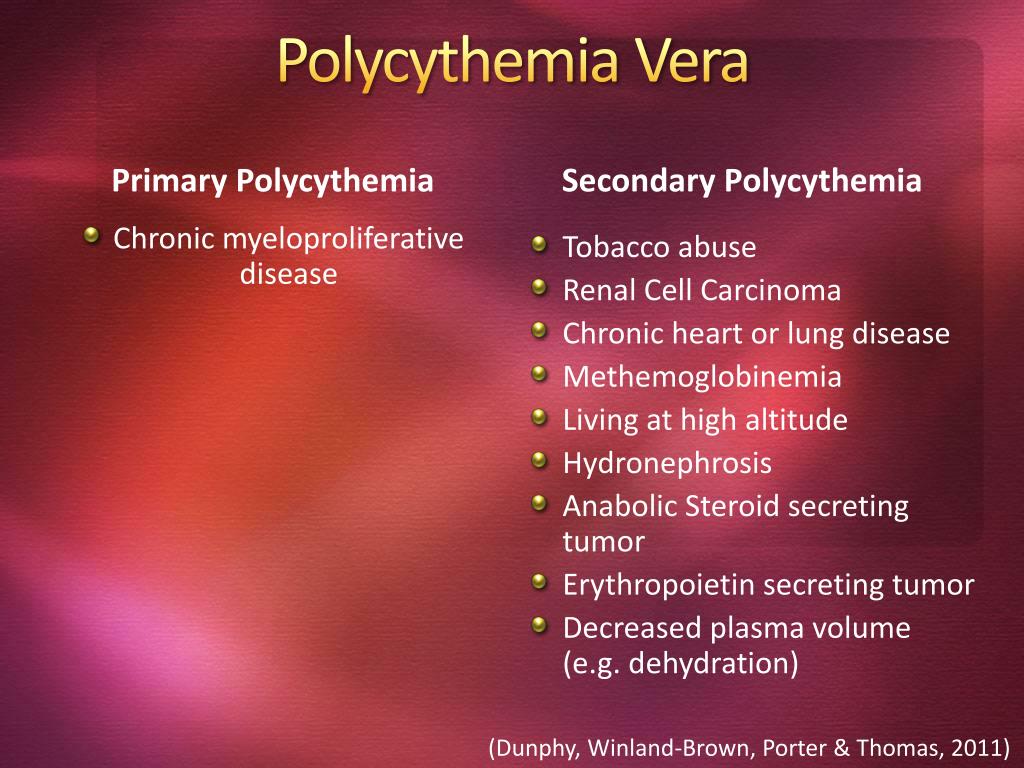
Lifestyle Modifications
In addition to medical treatments, certain lifestyle changes can help manage PV:
- Staying hydrated to help maintain proper blood flow
- Avoiding extreme temperatures, which can affect blood flow
- Quitting smoking to reduce cardiovascular risks
- Regular exercise to improve circulation
- Maintaining a healthy weight
Potential Complications of Polycythemia Vera
If left untreated, polycythemia vera can lead to several serious complications:
Blood Clots
The increased blood thickness in PV raises the risk of blood clots, which can lead to life-threatening conditions such as stroke, heart attack, or pulmonary embolism. How significant is this risk? Studies have shown that blood clots are a major cause of morbidity and mortality in PV patients, with up to 30% of patients experiencing a thrombotic event.
Enlarged Spleen
The spleen may become enlarged (splenomegaly) as it works harder to filter the increased number of blood cells. This can cause abdominal discomfort and, in severe cases, may lead to rupture of the spleen.
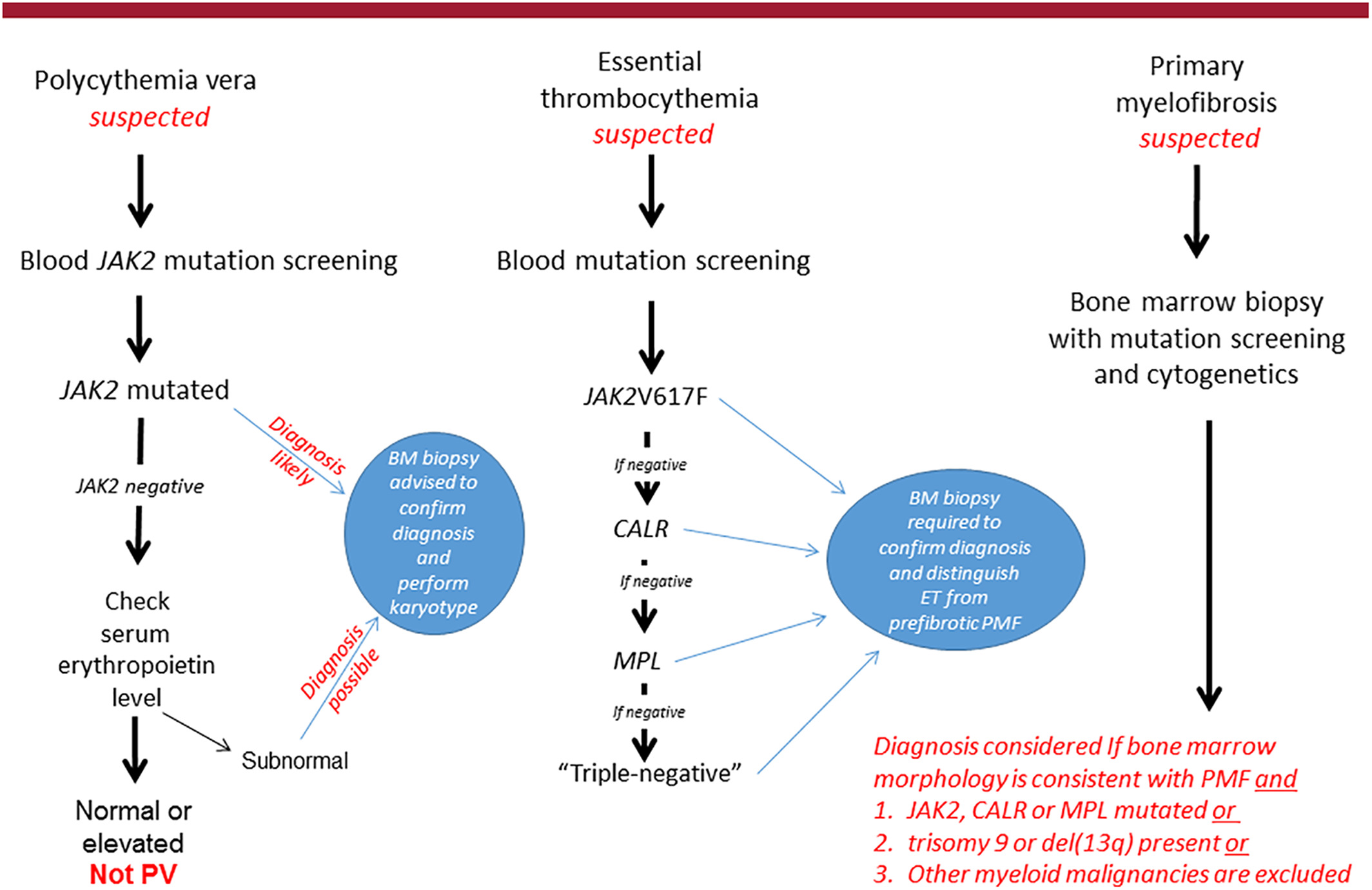
Progression to Other Blood Disorders
In rare cases, PV can progress to other blood disorders, including:
- Myelofibrosis: A condition where bone marrow is replaced by scar tissue
- Myelodysplastic syndrome: A group of disorders where blood cells don’t mature properly
- Acute myeloid leukemia: A type of blood and bone marrow cancer
What is the likelihood of PV progressing to these conditions? The risk of progression varies, but studies suggest that approximately 10-20% of PV patients may develop myelofibrosis over time, while the risk of transformation to acute leukemia is estimated at about 1-3% over 10 years.
Living with Polycythemia Vera: Long-Term Outlook and Quality of Life
While polycythemia vera is a chronic condition, many individuals with PV can lead full and active lives with proper management. The long-term outlook for people with PV has improved significantly in recent years due to advancements in treatment and better understanding of the disease.
Regular medical follow-ups are essential for monitoring the progression of the disease and adjusting treatment as needed. Patients are often encouraged to:
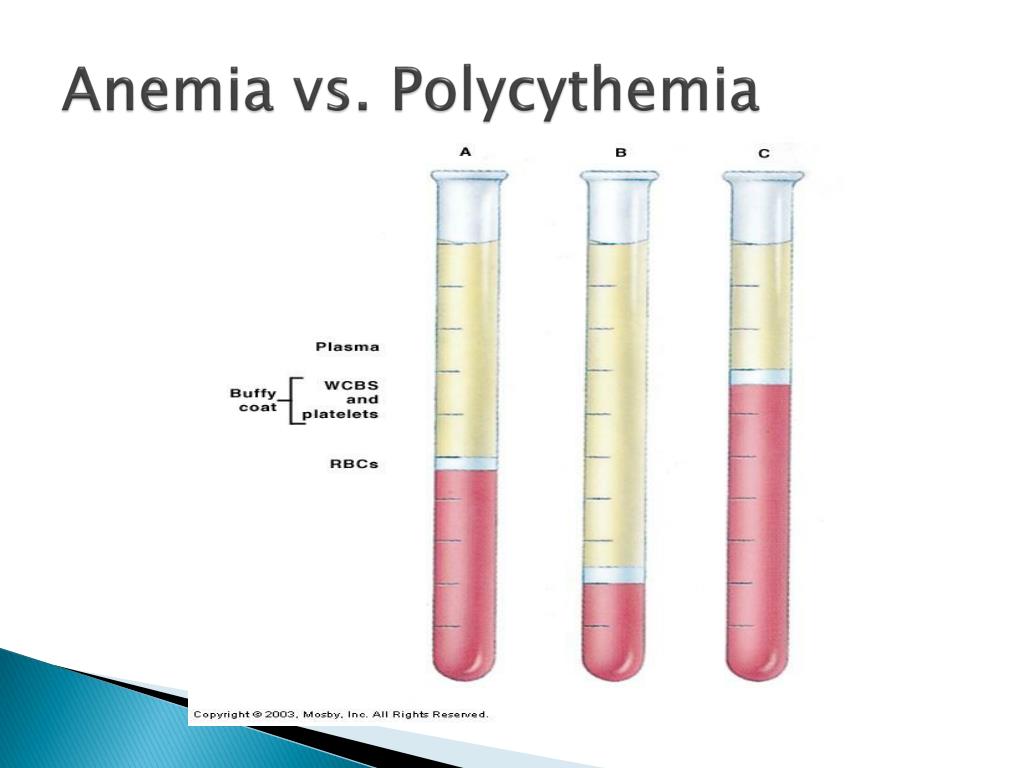
- Adhere to their treatment plan
- Report any new or worsening symptoms promptly
- Maintain a healthy lifestyle
- Join support groups or seek counseling if needed
Can polycythemia vera be cured? Currently, there is no cure for PV. However, with appropriate treatment and management, many patients can achieve long-term remission and experience a good quality of life.
Advances in Polycythemia Vera Research and Future Directions
Research into polycythemia vera continues to evolve, with scientists exploring new treatment options and working to better understand the underlying mechanisms of the disease. Some areas of ongoing research include:
Targeted Therapies
Researchers are investigating new targeted therapies that specifically address the genetic mutations associated with PV. These therapies aim to provide more effective treatment with fewer side effects.
Combination Treatments
Studies are exploring the potential benefits of combining different treatment approaches to improve outcomes for PV patients.
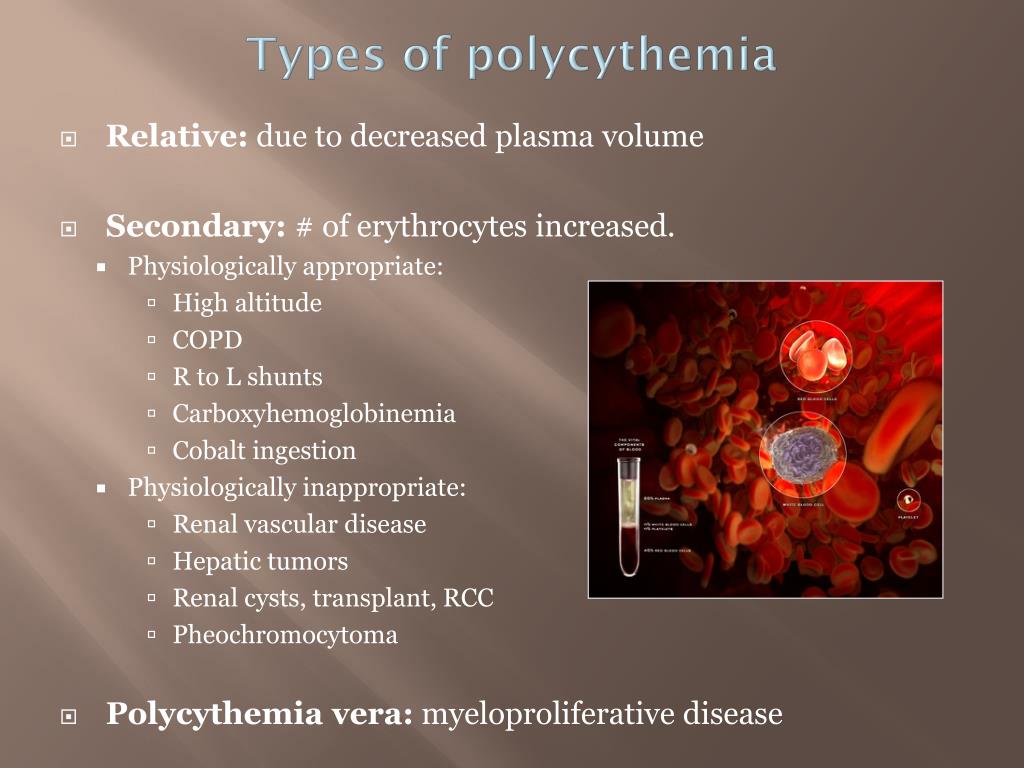
Biomarkers for Disease Progression
Scientists are working to identify biomarkers that could help predict disease progression and guide treatment decisions.
Gene Therapy
While still in early stages, gene therapy approaches are being explored as a potential future treatment option for PV and other myeloproliferative neoplasms.
What can patients expect from these research efforts? While it’s difficult to predict exactly how these research initiatives will pan out, they offer hope for improved treatments and potentially even a cure for polycythemia vera in the future.
Support and Resources for Polycythemia Vera Patients
Living with a chronic condition like polycythemia vera can be challenging, but numerous resources are available to support patients and their families:
- Patient advocacy groups such as the MPN Research Foundation and the Leukemia & Lymphoma Society offer educational materials and support services
- Online forums and support groups provide platforms for patients to connect and share experiences
- Clinical trial databases can help patients explore potential new treatment options
- Financial assistance programs may be available to help with treatment costs
How can patients find the right support resources? Healthcare providers can often provide information on local support services, and online directories can help patients find resources specific to their needs and location.
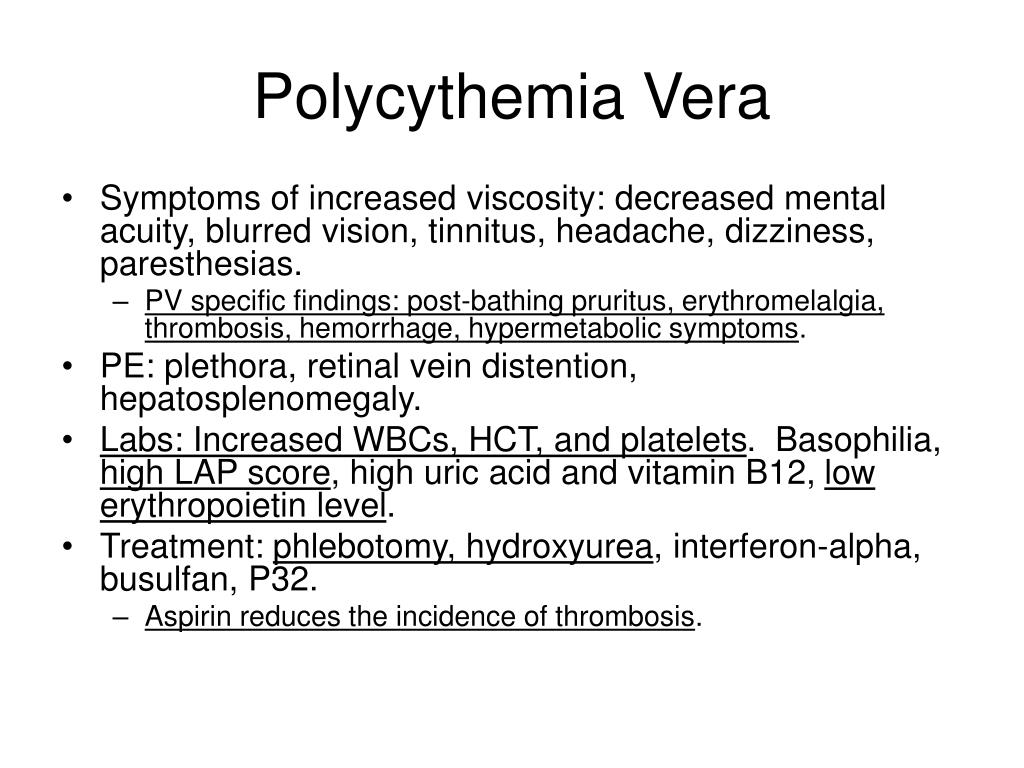
In conclusion, while polycythemia vera presents significant challenges, ongoing research and improved treatment options offer hope for better outcomes. With proper medical care, support, and self-management, many individuals with PV can maintain a good quality of life and effectively manage their condition.
Polycythemia vera – Symptoms and causes
Overview
Polycythemia vera (pol-e-sy-THEE-me-uh VEER-uh) is a type of blood cancer. It causes your bone marrow to make too many red blood cells. These excess cells thicken your blood, slowing its flow, which may cause serious problems, such as blood clots.
Polycythemia vera is rare. It usually develops slowly, and you might have it for years without knowing. Often the condition is found during a blood test done for another reason.
Without treatment, polycythemia vera can be life-threatening. But proper medical care can help ease signs, symptoms and complications of this disease.
Products & Services
Show more products from Mayo Clinic
Symptoms
Many people with polycythemia vera don’t have noticeable signs or symptoms. Some people might develop vague symptoms such as headache, dizziness, fatigue and blurred vision.
More-specific symptoms of polycythemia vera include:
- Itchiness, especially after a warm bath or shower
- Numbness, tingling, burning, or weakness in your hands, feet, arms or legs
- A feeling of fullness soon after eating and bloating or pain in your left upper abdomen due to an enlarged spleen
- Unusual bleeding, such as a nosebleed or bleeding gums
- Painful swelling of one joint, often the big toe
- Shortness of breath and difficulty breathing when lying down
When to see a doctor
Make an appointment with your doctor if you have signs or symptoms of polycythemia vera.
Causes
Polycythemia vera occurs when a mutation in a gene causes a problem with blood cell production. Normally, your body regulates the number of each of the three types of blood cells you have — red blood cells, white blood cells and platelets. But in polycythemia vera, your bone marrow makes too many of some of these blood cells.
But in polycythemia vera, your bone marrow makes too many of some of these blood cells.
The cause of the gene mutation in polycythemia vera is unknown, but it’s generally not inherited from your parents.
Risk factors
Polycythemia vera can occur at any age, but it’s more common in adults between 50 and 75. Men are more likely to get polycythemia vera, but women tend to get the disease at younger ages.
Complications
Possible complications of polycythemia vera include:
- Blood clots. Increased blood thickness and decreased blood flow, as well as abnormalities in your platelets, raise your risk of blood clots. Blood clots can cause a stroke, a heart attack, or a blockage in an artery in your lungs or a vein deep within a leg muscle or in the abdomen.
- Enlarged spleen. Your spleen helps your body fight infection and filter unwanted material, such as old or damaged blood cells. The increased number of blood cells caused by polycythemia vera makes your spleen work harder than normal, which causes it to enlarge.
- Problems due to high levels of red blood cells. Too many red blood cells can lead to a number of other complications, including open sores on the inside lining of your stomach, upper small intestine or esophagus (peptic ulcers) and inflammation in your joints (gout).
- Other blood disorders. In rare cases, polycythemia vera can lead to other blood diseases, including a progressive disorder in which bone marrow is replaced with scar tissue, a condition in which stem cells don’t mature or function properly, or cancer of the blood and bone marrow (acute leukemia).
March 18, 2021
Show references
- Ferri FF. Polycythemia vera.
 In: Ferri’s Clinical Advisor 2020. Elsevier; 2020. https://www.clinicalkey.com. Accessed Dec. 7, 2019.
In: Ferri’s Clinical Advisor 2020. Elsevier; 2020. https://www.clinicalkey.com. Accessed Dec. 7, 2019. - Polycythemia vera. National Heart, Lung, and Blood Institute. https://www.nhlbi.nih.gov/health-topics/polycythemia-vera. Accessed Dec. 7, 2019.
- Goldman L, et al., eds. Polycythemia vera, essential thrombocythemia, and primary myelofibrosis. In: Goldman-Cecil Medicine. 26th ed. Elsevier; 2020. https://www.clinicalkey.com. Accessed Dec. 8, 2019.
- AskMayoExpert. Polycythemia vera (adult). Mayo Clinic. 2019.
- Cuthbert D, et al. Polycythemia vera-associated complications: Pathogenesis, clinical manifestations, and effects on outcomes. Journal of Blood Medicine. 2019; doi:10.2147/JBM.S189922.
- Tefferi A, et al. Polycythemia vera treatment algorithm 2018. Blood Cancer Journal. 2018; doi:10.1038/s41408-017-0042-7.
- Tefferi A. Prognosis and treatment of polycythemia vera. https://www.uptodate.com/contents/search. Accessed Dec. 7, 2019.
- Griesshammer M, et al. Thromboembolic events in polycythemia vera. Annals of Hematology. 2019; doi:10.1007/s00277-019-03625-x.
- Spivak JL. Polycythemia vera. Current Treatment Options in Oncology. 2018; doi:10.1007/s11864-018-0529-x.
- Van de Ree-Pellikaan C, et al. Treatment strategies for polycythemia vera: Observations in a Dutch “real-world” cohort study. European Journal of Haematology. 2019; doi:10.1111/ejh.13291.
- Ferrari A, et al. Clinical outcomes under hydroxyurea treatment in polycythemia vera: A systematic review and meta-analysis. Haematologica. 2019; doi:10.3324/haematol.2019.221234.
Related
Products & Services
Show more products and services from Mayo Clinic
Definition, causes, symptoms, and more
Polycythemia refers to an increase in the number of red blood cells in the body.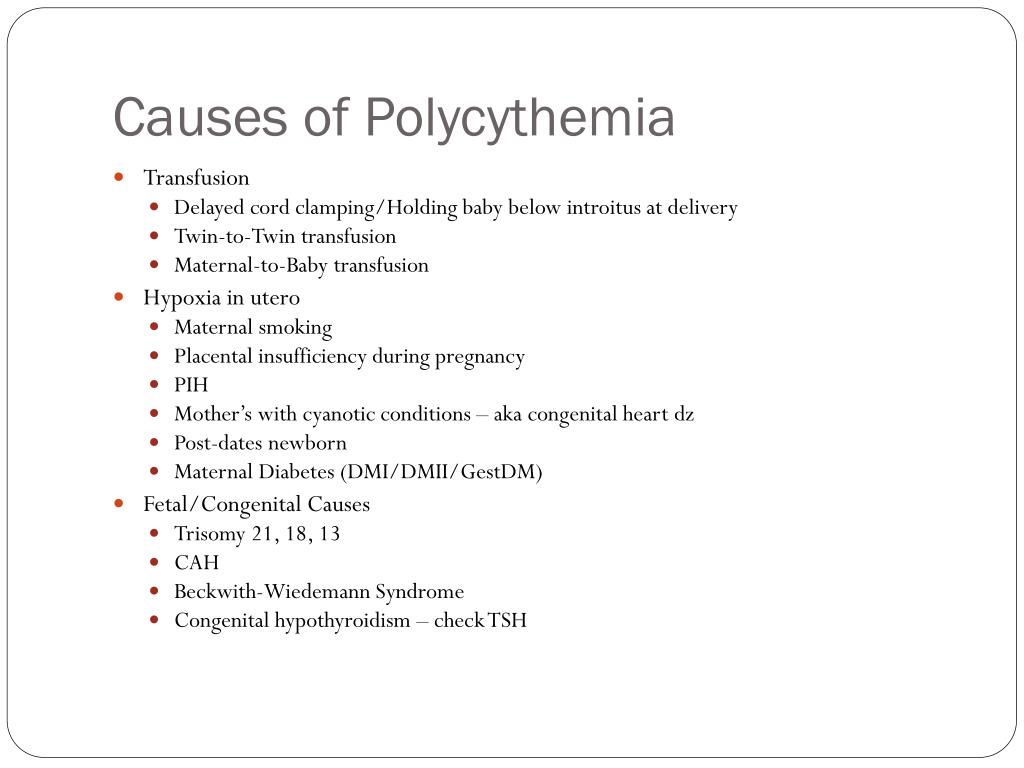 The extra cells cause the blood to be thicker, and this, in turn, increases the risk of other health issues, such as blood clots.
The extra cells cause the blood to be thicker, and this, in turn, increases the risk of other health issues, such as blood clots.
Polycythemia can have different causes, each of which has its own treatment options. The treatment of polycythemia involves treating any underlying conditions, if possible, and finding ways to bring blood cell levels down.
In this article, learn more about the causes of polycythemia, as well as the symptoms and treatment options.
Share on PinterestA person with polycythemia may experience headaches, dizziness, and excessive sweating.
There are two types of polycythemia, which have different causes.
Primary polycythemia
Primary polycythemia is also called polycythemia vera (PV).
PV is a rare, slow growing blood cancer that is a type of condition known as a myeloproliferative neoplasm. PV causes the bone marrow to create excess precursor blood cells that develop and function abnormally, leading to the production of too many red blood cells.
A person with PV may also have increased numbers of other blood cells, such as white blood cells or platelets.
Secondary polycythemia
Secondary polycythemia can occur if the increase in red blood cells is not due to the myeloproliferative disease of PV.
The overproduction of blood cells in secondary polycythemia is limited to the red blood cells.
Causes of secondary polycythemia include:
- being at a very high altitude
- obstructive sleep apnea
- certain types of tumor
- heart or lung disease that causes a low oxygen level in the body
Risk factors
Some people may be more at risk than others of primary polycythemia. The National Center for Advancing Translational Sciences note that most cases of PV appear as a person ages, usually around the age of 60 years. They also note that it is more common in men than in women.
PV is not necessarily hereditary, and most people with the disease do not have a family history of PV.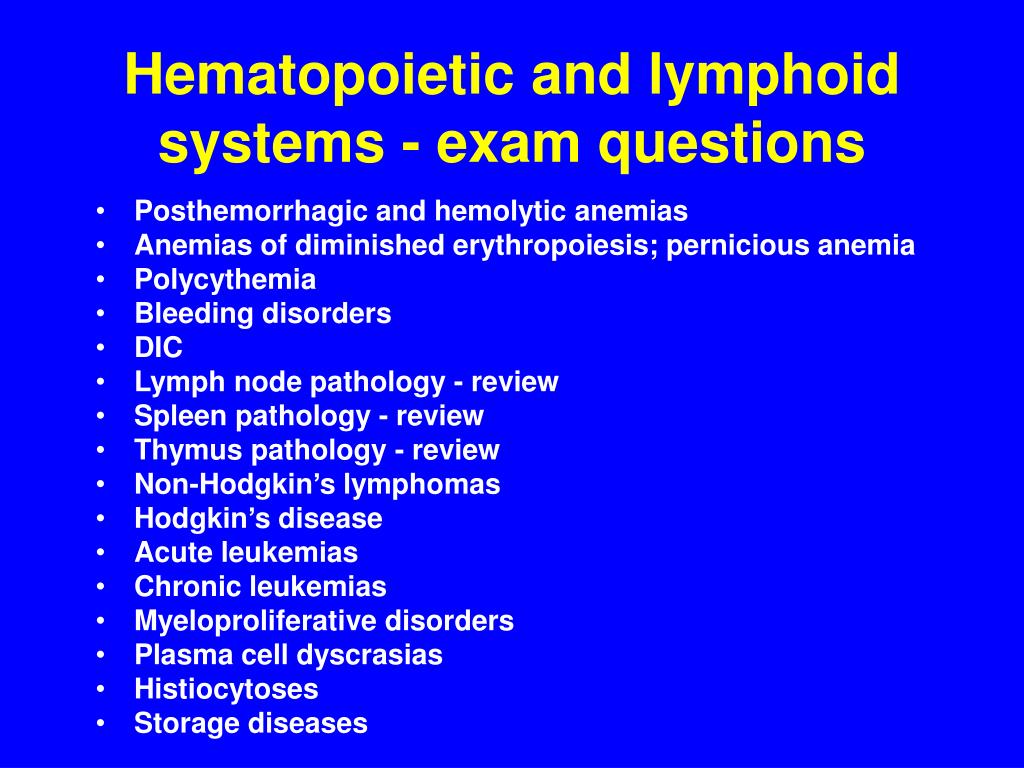 However, there appears to be a connection to a certain genetic mutation.
However, there appears to be a connection to a certain genetic mutation.
The Leukemia & Lymphoma Society note that almost all individuals with PV have a mutation in the Janus kinase 2 (JAK2) gene. However, the precise role that it plays in the condition is still unclear.
Other gene mutations, such as that of the TET2 gene, may also have an association with this condition. Most of the time, these genes are not hereditary, but in some rare cases, they may pass from a parent to their child in the sperm or egg.
Anyone with a family history of PV may still wish to see a doctor for an evaluation.
It is not uncommon for a person to have polycythemia and be unaware of it. Symptoms tend to build very slowly over time.
Having too many red blood cells thickens the blood, which makes healthy blood flow more difficult. It can also increase a person’s risk of blood clots. This risk is especially high if a person with PV has an excess of both red blood cells and platelets.
A doctor may discover the condition during a routine blood examination or when following up on another condition.
The symptoms of PV may become more apparent over time. More common symptoms include:
- dizziness or vertigo
- headaches
- excessive sweating
- itchy skin
- ringing in the ears
- blurred vision
- fatigue
- reddish or purplish skin on the palms, earlobes, and nose
- bleeding or bruising
- a burning sensation in the feet
- abdominal fullness
- frequent nosebleeds
- bleeding gums
Without treatment, people with PV may also be more likely to experience complications, such as:
- enlarged spleen
- blood clots
- angina
- stroke
- peptic ulcers
- heart disease
- gout
- other blood disorders, such as myelofibrosis or leukemia
If doctors suspect that a person has polycythemia, they will order several tests to help identify the underlying issue.
Blood tests
Blood tests, such as a complete blood count, will reveal any increase in red blood cells in the bloodstream, as well as any abnormal levels of platelets and white blood cells. If PV seems possible, a doctor will order more specific blood tests.
Bone marrow biopsy
If necessary, the doctor may also want to remove some bone marrow on which to perform tests in a lab.
A bone marrow biopsy involves taking a small sample of the bone marrow with a needle for examination under a microscope.
Genetic tests
Although genetic causes of PV are more rare, doctors may also want to analyze the person’s bone marrow for genetic mutations that have links to PV.
They may also recommend examining cells in the blood for JAK2 mutation.
Treatment for polycythemia will depend on the underlying cause of the condition.
In people with secondary polycythemia resulting from causes such as obstructive sleep apnea, treating the underlying cause should help resolve the high red blood cell count.
PV, however, is a chronic condition that has no known cure. The treatment for PV aims to manage the condition by reducing both the red blood cell count and the risk of complications, such as blood clots. If the platelet count is too high, there are ways to treat this as well.
Treatment options for PV can include:
Phlebotomy
To help manage the condition, doctors will look to reduce the red blood cell count through a process called phlebotomy, which manually removes blood through one of the veins.
Depending on the individual case, doctors will recommend removing a certain amount of blood at set intervals to get the red blood cell count closer to normal levels.
Drugs to reduce blood cells
Sometimes, phlebotomy is not enough to control blood cell growth. Doctors may then recommend myelosuppressive drugs to help control blood cell counts.
These drugs include hydroxyurea (Hydrea), which suppresses the bone marrow to keep it from producing as many blood cells.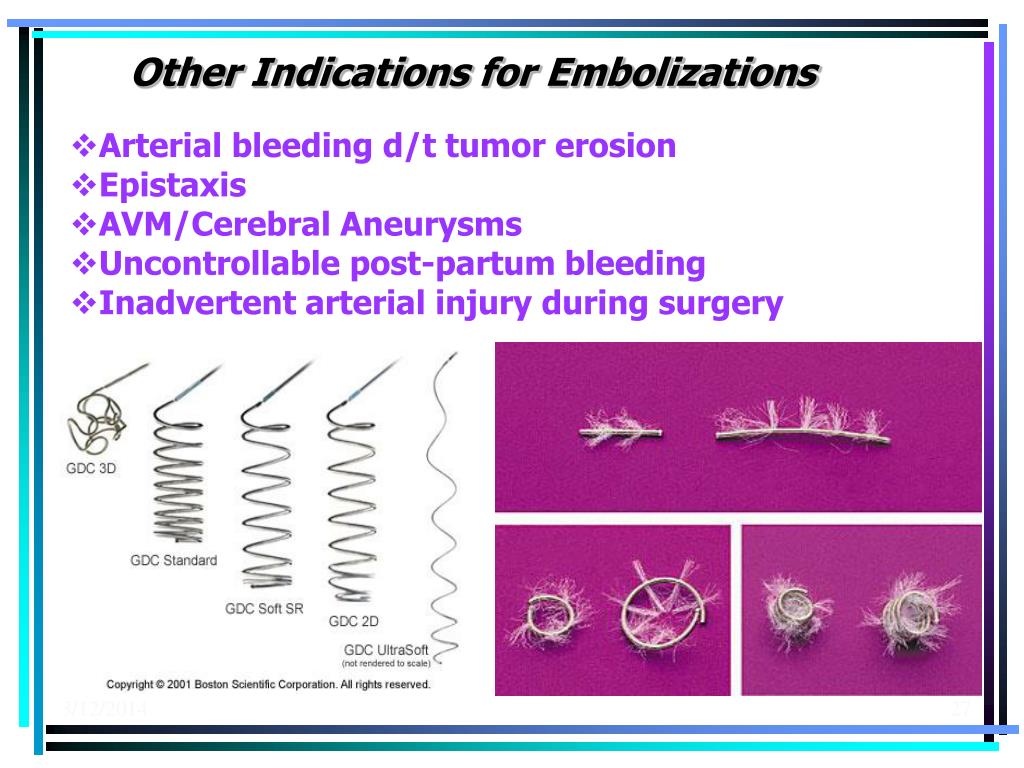
JAK2 inhibitors
In cases where a person does not respond well to other medications, doctors may recommend drugs that inhibit the JAK2 enzyme, which the JAK2 gene is responsible for producing. These include ruxolitinib (Jakafi).
Other medications
Doctors will also often recommend other drugs to help control symptoms. These include aspirin and antihistamines. Taking low dose aspirin helps reduce the risk of clotting in many people with PV, and it may also alleviate troubling symptoms, such as headaches. Doctors may recommend antihistamine drugs to help relieve itchiness.
Determining the underlying type of polycythemia helps doctors know how best to treat or manage the issue. If treatment is possible, the person should make a full recovery.
In cases of PV, treatment will focus on managing the condition and symptoms, as there is currently no cure.
In most cases, the person will have a normal or nearly normal quality of life, and doctors can effectively manage the condition for a very long time.
In addition to managing symptoms, new treatments will look to help slow the progression of the disease.
Polycythemia is an increase in the number of red blood cells in the body. Doctors may discover it as part of a routine blood check, or they might diagnose it once the person starts experiencing symptoms.
PV is a chronic condition with no known cure. However, effective treatment can help sufficiently manage the disease and its symptoms.
Anyone who has symptoms or a family history of polycythemia vera should see a doctor for a diagnosis.
Definition, causes, symptoms, and more
Polycythemia refers to an increase in the number of red blood cells in the body. The extra cells cause the blood to be thicker, and this, in turn, increases the risk of other health issues, such as blood clots.
Polycythemia can have different causes, each of which has its own treatment options. The treatment of polycythemia involves treating any underlying conditions, if possible, and finding ways to bring blood cell levels down.
In this article, learn more about the causes of polycythemia, as well as the symptoms and treatment options.
Share on PinterestA person with polycythemia may experience headaches, dizziness, and excessive sweating.
There are two types of polycythemia, which have different causes.
Primary polycythemia
Primary polycythemia is also called polycythemia vera (PV).
PV is a rare, slow growing blood cancer that is a type of condition known as a myeloproliferative neoplasm. PV causes the bone marrow to create excess precursor blood cells that develop and function abnormally, leading to the production of too many red blood cells.
A person with PV may also have increased numbers of other blood cells, such as white blood cells or platelets.
Secondary polycythemia
Secondary polycythemia can occur if the increase in red blood cells is not due to the myeloproliferative disease of PV.
The overproduction of blood cells in secondary polycythemia is limited to the red blood cells.
Causes of secondary polycythemia include:
- being at a very high altitude
- obstructive sleep apnea
- certain types of tumor
- heart or lung disease that causes a low oxygen level in the body
Risk factors
Some people may be more at risk than others of primary polycythemia. The National Center for Advancing Translational Sciences note that most cases of PV appear as a person ages, usually around the age of 60 years. They also note that it is more common in men than in women.
PV is not necessarily hereditary, and most people with the disease do not have a family history of PV. However, there appears to be a connection to a certain genetic mutation.
The Leukemia & Lymphoma Society note that almost all individuals with PV have a mutation in the Janus kinase 2 (JAK2) gene. However, the precise role that it plays in the condition is still unclear.
Other gene mutations, such as that of the TET2 gene, may also have an association with this condition.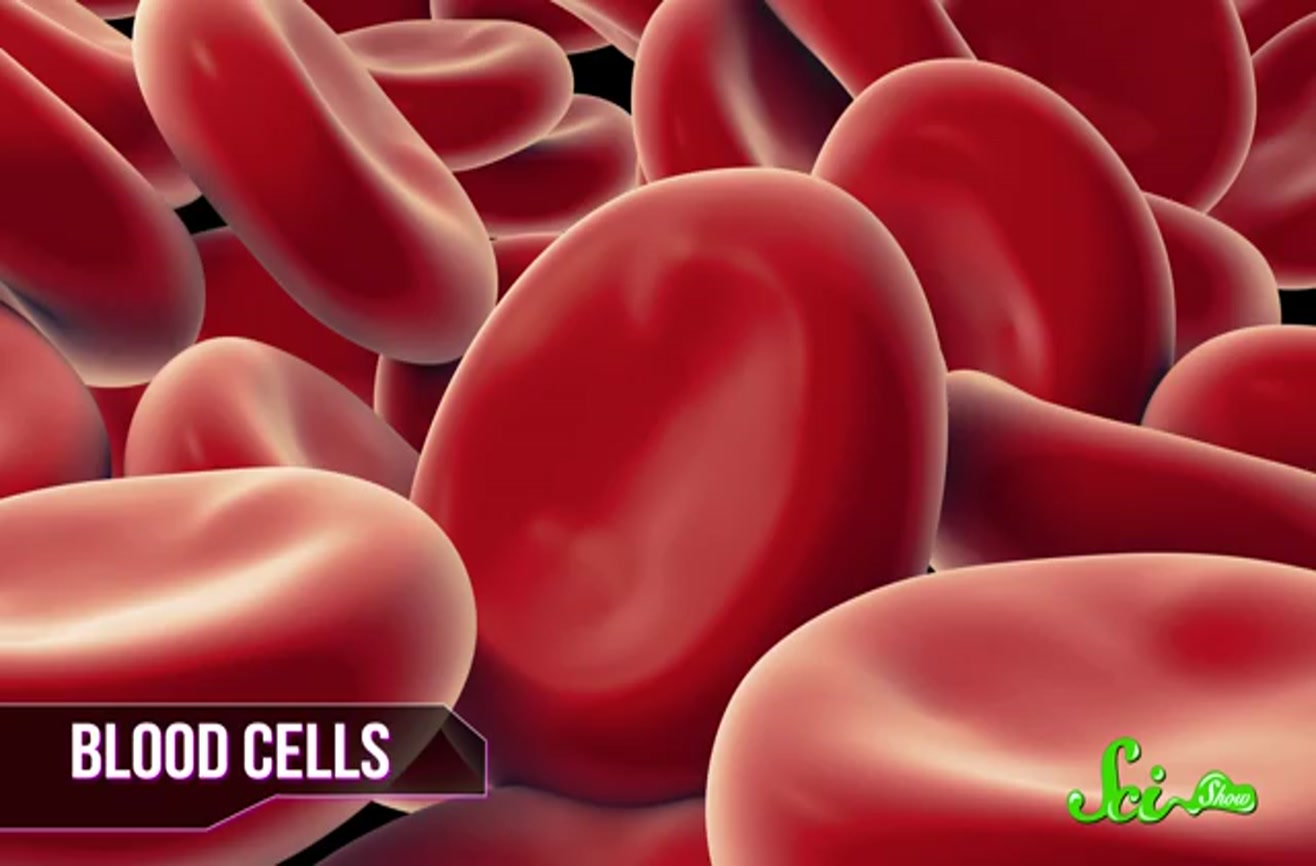 Most of the time, these genes are not hereditary, but in some rare cases, they may pass from a parent to their child in the sperm or egg.
Most of the time, these genes are not hereditary, but in some rare cases, they may pass from a parent to their child in the sperm or egg.
Anyone with a family history of PV may still wish to see a doctor for an evaluation.
It is not uncommon for a person to have polycythemia and be unaware of it. Symptoms tend to build very slowly over time.
Having too many red blood cells thickens the blood, which makes healthy blood flow more difficult. It can also increase a person’s risk of blood clots. This risk is especially high if a person with PV has an excess of both red blood cells and platelets.
A doctor may discover the condition during a routine blood examination or when following up on another condition.
The symptoms of PV may become more apparent over time. More common symptoms include:
- dizziness or vertigo
- headaches
- excessive sweating
- itchy skin
- ringing in the ears
- blurred vision
- fatigue
- reddish or purplish skin on the palms, earlobes, and nose
- bleeding or bruising
- a burning sensation in the feet
- abdominal fullness
- frequent nosebleeds
- bleeding gums
Without treatment, people with PV may also be more likely to experience complications, such as:
- enlarged spleen
- blood clots
- angina
- stroke
- peptic ulcers
- heart disease
- gout
- other blood disorders, such as myelofibrosis or leukemia
If doctors suspect that a person has polycythemia, they will order several tests to help identify the underlying issue.
Blood tests
Blood tests, such as a complete blood count, will reveal any increase in red blood cells in the bloodstream, as well as any abnormal levels of platelets and white blood cells. If PV seems possible, a doctor will order more specific blood tests.
Bone marrow biopsy
If necessary, the doctor may also want to remove some bone marrow on which to perform tests in a lab.
A bone marrow biopsy involves taking a small sample of the bone marrow with a needle for examination under a microscope.
Genetic tests
Although genetic causes of PV are more rare, doctors may also want to analyze the person’s bone marrow for genetic mutations that have links to PV.
They may also recommend examining cells in the blood for JAK2 mutation.
Treatment for polycythemia will depend on the underlying cause of the condition.
In people with secondary polycythemia resulting from causes such as obstructive sleep apnea, treating the underlying cause should help resolve the high red blood cell count.
PV, however, is a chronic condition that has no known cure. The treatment for PV aims to manage the condition by reducing both the red blood cell count and the risk of complications, such as blood clots. If the platelet count is too high, there are ways to treat this as well.
Treatment options for PV can include:
Phlebotomy
To help manage the condition, doctors will look to reduce the red blood cell count through a process called phlebotomy, which manually removes blood through one of the veins.
Depending on the individual case, doctors will recommend removing a certain amount of blood at set intervals to get the red blood cell count closer to normal levels.
Drugs to reduce blood cells
Sometimes, phlebotomy is not enough to control blood cell growth. Doctors may then recommend myelosuppressive drugs to help control blood cell counts.
These drugs include hydroxyurea (Hydrea), which suppresses the bone marrow to keep it from producing as many blood cells.
JAK2 inhibitors
In cases where a person does not respond well to other medications, doctors may recommend drugs that inhibit the JAK2 enzyme, which the JAK2 gene is responsible for producing. These include ruxolitinib (Jakafi).
Other medications
Doctors will also often recommend other drugs to help control symptoms. These include aspirin and antihistamines. Taking low dose aspirin helps reduce the risk of clotting in many people with PV, and it may also alleviate troubling symptoms, such as headaches. Doctors may recommend antihistamine drugs to help relieve itchiness.
These include aspirin and antihistamines. Taking low dose aspirin helps reduce the risk of clotting in many people with PV, and it may also alleviate troubling symptoms, such as headaches. Doctors may recommend antihistamine drugs to help relieve itchiness.
Determining the underlying type of polycythemia helps doctors know how best to treat or manage the issue. If treatment is possible, the person should make a full recovery.
In cases of PV, treatment will focus on managing the condition and symptoms, as there is currently no cure.
In most cases, the person will have a normal or nearly normal quality of life, and doctors can effectively manage the condition for a very long time.
In addition to managing symptoms, new treatments will look to help slow the progression of the disease.
Polycythemia is an increase in the number of red blood cells in the body. Doctors may discover it as part of a routine blood check, or they might diagnose it once the person starts experiencing symptoms.
PV is a chronic condition with no known cure. However, effective treatment can help sufficiently manage the disease and its symptoms.
Anyone who has symptoms or a family history of polycythemia vera should see a doctor for a diagnosis.
Polycythemia Vera – Hematology and Oncology
-
Complete blood count (CBC)
-
Testing for JAK2, CALR, or LNK mutations (done sequentially)
-
Sometimes bone marrow examination and serum erythropoietin level
-
Sometimes RBC mass determination
Polycythemia vera is often first suspected because of an abnormal CBC (eg, hemoglobin > 16.5 g/dL [> 165 g/L] in men or >16.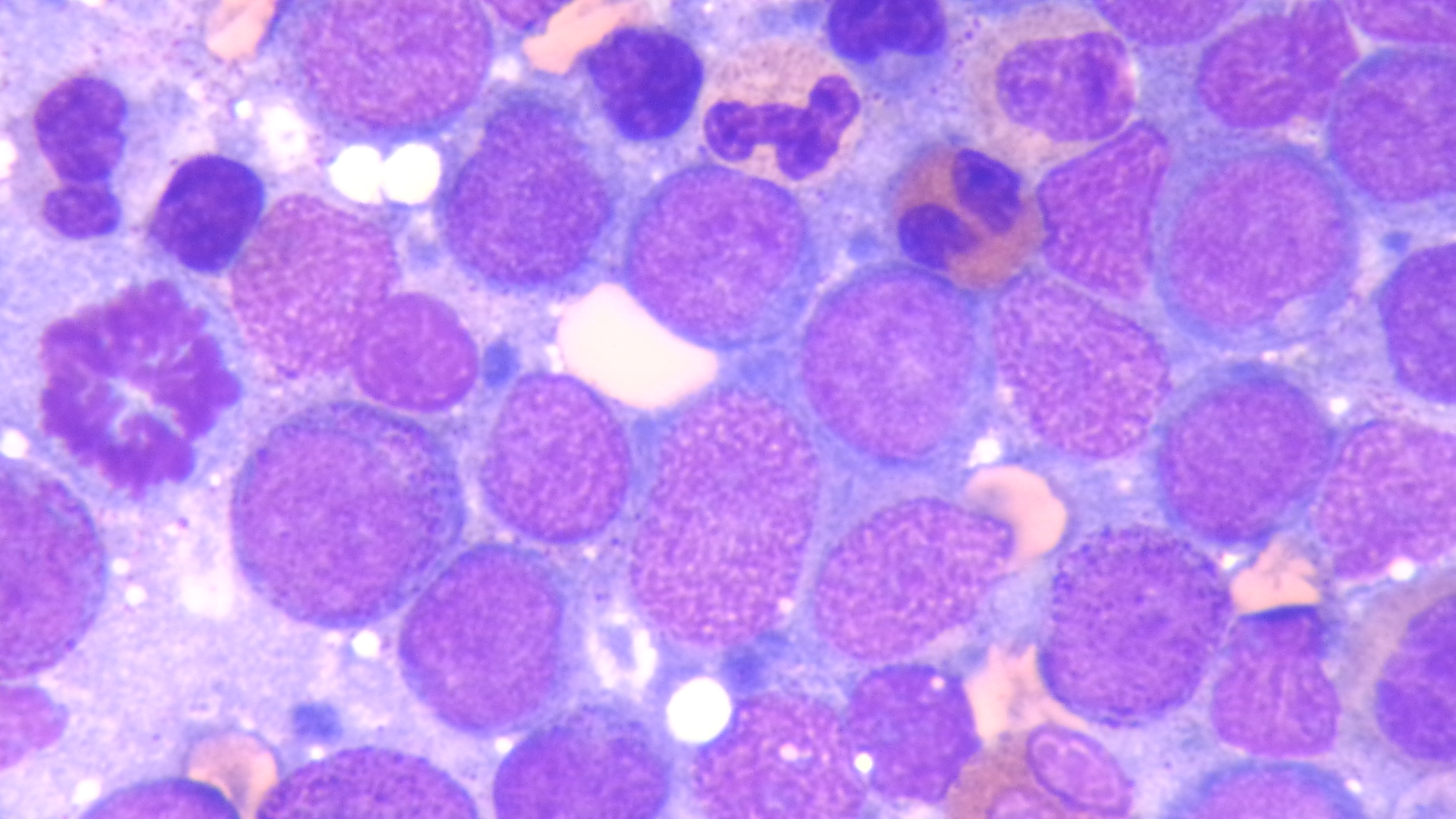 0 g/dL [> 160 g/L] in women). However, hemoglobin and hematocrit levels may be misleading. The hematocrit may be normal because of plasma volume expansion, and the hemoglobin may be normal if there is concurrent iron deficiency. Thus, an elevated red cell count is the most useful measure of erythrocytosis. Along with erythrocytosis, the neutrophil and platelet counts are usually, but not invariably, increased. In patients with only an elevated hematocrit, polycythemia vera may be present, but secondary erythrocytosis, a more common cause of elevated hematocrit, must be considered first. Polycythemia vera should always be considered in patients with a normal hematocrit but microcytic erythrocytosis and evidence of iron deficiency; this combination of findings is a hallmark of polycythemia vera.
0 g/dL [> 160 g/L] in women). However, hemoglobin and hematocrit levels may be misleading. The hematocrit may be normal because of plasma volume expansion, and the hemoglobin may be normal if there is concurrent iron deficiency. Thus, an elevated red cell count is the most useful measure of erythrocytosis. Along with erythrocytosis, the neutrophil and platelet counts are usually, but not invariably, increased. In patients with only an elevated hematocrit, polycythemia vera may be present, but secondary erythrocytosis, a more common cause of elevated hematocrit, must be considered first. Polycythemia vera should always be considered in patients with a normal hematocrit but microcytic erythrocytosis and evidence of iron deficiency; this combination of findings is a hallmark of polycythemia vera.
Polycythemia vera may also be suspected based on clinical findings, including thrombosis in an unusual site, such as Budd-Chiari syndrome in women or portal vein thrombosis in men.
The challenge in diagnosing polycythemia vera is that several other myeloproliferative neoplasms can have the same genetic mutations and bone marrow findings. Although the hallmark of polycythemia vera is erythrocytosis, some patients present with isolated leukocytosis or isolated thrombocytosis and do not initially manifest an elevated hematocrit level. Thus, multiple findings must be integrated.
Patients suspected of having polycythemia vera typically should have testing for JAK2V617F (exon 14) and JAK2 exon12 mutations. If these results are negative, testing for CALR and LNK mutations is done. The presence of a known causative mutation in a patient with clear erythrocytosis is strongly suggestive of polycythemia vera. If erythrocytosis is not clearly present, direct measurement of red cell mass and plasma volume (eg, with chromium-labeled RBCs, although this test is usually available only at specialized centers) is done to help differentiate between true and relative polycythemia and between polycythemia vera and other myeloproliferative disorders (which do not have an increased red cell mass).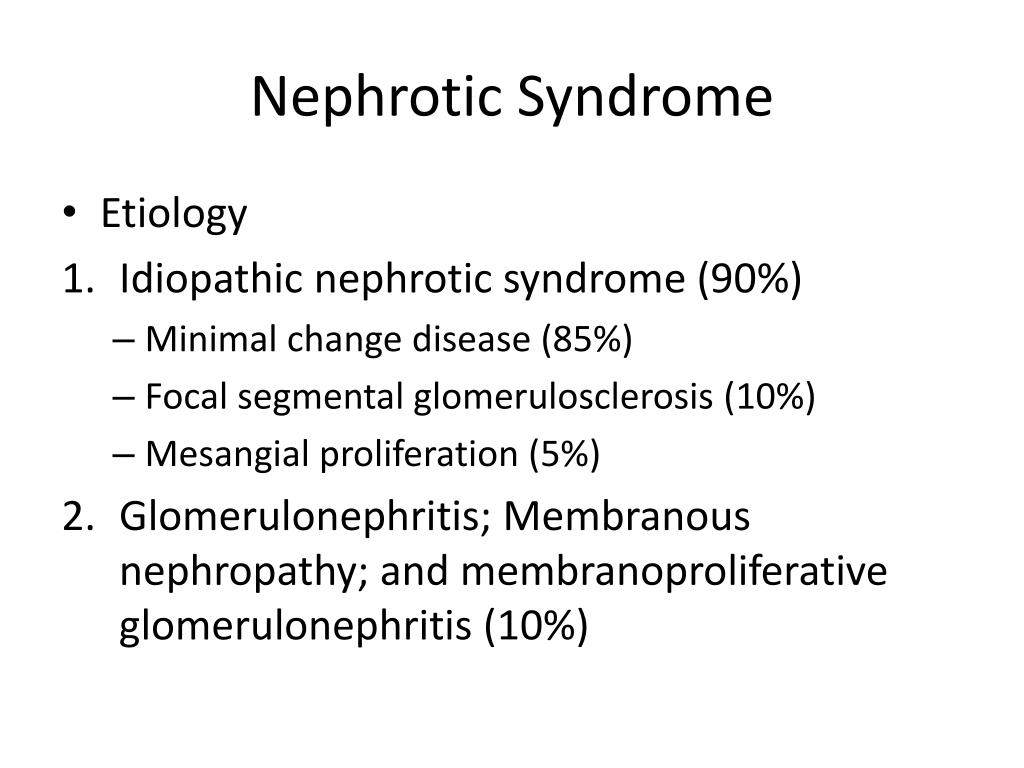 If erythrocytosis is present but secondary causes have not been excluded, serum erythropoietin level should be measured; patients with polycythemia vera typically have low or low-normal serum erythropoietin levels; elevated levels suggest secondary erythrocytosis.
If erythrocytosis is present but secondary causes have not been excluded, serum erythropoietin level should be measured; patients with polycythemia vera typically have low or low-normal serum erythropoietin levels; elevated levels suggest secondary erythrocytosis.
Bone marrow examination is not diagnostic of polycythemia vera. When done, bone marrow examination typically shows panmyelosis, large and clumped megakaryocytes, and sometimes an increase in reticulin fibers. However, no bone marrow findings absolutely differentiate polycythemia vera from other disorders of excessive erythrocytosis (eg, congenital familial polycythemia) or from other myeloproliferative neoplasms, of which polycythemia vera is the most common.
Acquired von Willebrand disease (as a cause of bleeding) may be diagnosed by showing decreased plasma von Willebrand factor antigen using the ristocetin cofactor test.
Nonspecific laboratory abnormalities that may occur in polycythemia vera include elevated vitamin B12 and B12-binding capacity, hyperuricemia and hyperuricosuria (present in ≥ 80% of patients), and decreased expression of MPL (the receptor for thrombopoietin) in megakaryocytes and platelets. These tests are not needed for diagnosis.
The World Health Organization diagnostic guidelines are based on hemoglobin and hematocrit levels and red cell mass determination, but are limited because they ignore leukocytosis, thrombocytosis, and splenomegaly.
Secondary Polycythemia: Practice Essentials, Pathophysiology, Epidemiology
Author
Srikanth Nagalla, MBBS, MS, FACP Chief of Benign Hematology, Miami Cancer Institute
Srikanth Nagalla, MBBS, MS, FACP is a member of the following medical societies: American Society of Hematology, Association of Specialty Professors
Disclosure: Serve(d) as a director, officer, partner, employee, advisor, consultant or trustee for: Alexion; Alnylam; Kedrion; Sanofi .
Coauthor(s)
Emmanuel C Besa, MD Professor Emeritus, Department of Medicine, Division of Hematologic Malignancies and Hematopoietic Stem Cell Transplantation, Kimmel Cancer Center, Jefferson Medical College of Thomas Jefferson University
Emmanuel C Besa, MD is a member of the following medical societies: American Association for Cancer Education, American Society of Clinical Oncology, American College of Clinical Pharmacology, American Federation for Medical Research, American Society of Hematology, New York Academy of Sciences
Disclosure: Nothing to disclose.
Specialty Editor Board
Francisco Talavera, PharmD, PhD Adjunct Assistant Professor, University of Nebraska Medical Center College of Pharmacy; Editor-in-Chief, Medscape Drug Reference
Disclosure: Received salary from Medscape for employment. for: Medscape.
Ronald A Sacher, MBBCh, FRCPC, DTM&H Professor of Internal Medicine and Pathology, Director, Hoxworth Blood Center, University of Cincinnati Academic Health Center
Ronald A Sacher, MBBCh, FRCPC, DTM&H is a member of the following medical societies: American Association for the Advancement of Science, American Association of Blood Banks, American Clinical and Climatological Association, American Society for Clinical Pathology, American Society of Hematology, College of American Pathologists, International Society of Blood Transfusion, International Society on Thrombosis and Haemostasis, Royal College of Physicians and Surgeons of Canada
Disclosure: Nothing to disclose.
Chief Editor
Sara J Grethlein, MD, FACP Professor of Clinical Medicine, Indiana University School of Medicine; Medical Director of Cancer Services, Indiana University Health, Adult Academic Health Center, IU Simon Cancer and IU North Hospital, Joe and Shelly Schwarz Cancer Center
Sara J Grethlein, MD, FACP is a member of the following medical societies: Alpha Omega Alpha, American College of Physician Executives, American College of Physicians, American Medical Women’s Association, American Society of Clinical Oncology, American Society of Hematology, Gold Humanism Honor Society, Leukemia and Lymphoma Society
Disclosure: Nothing to disclose.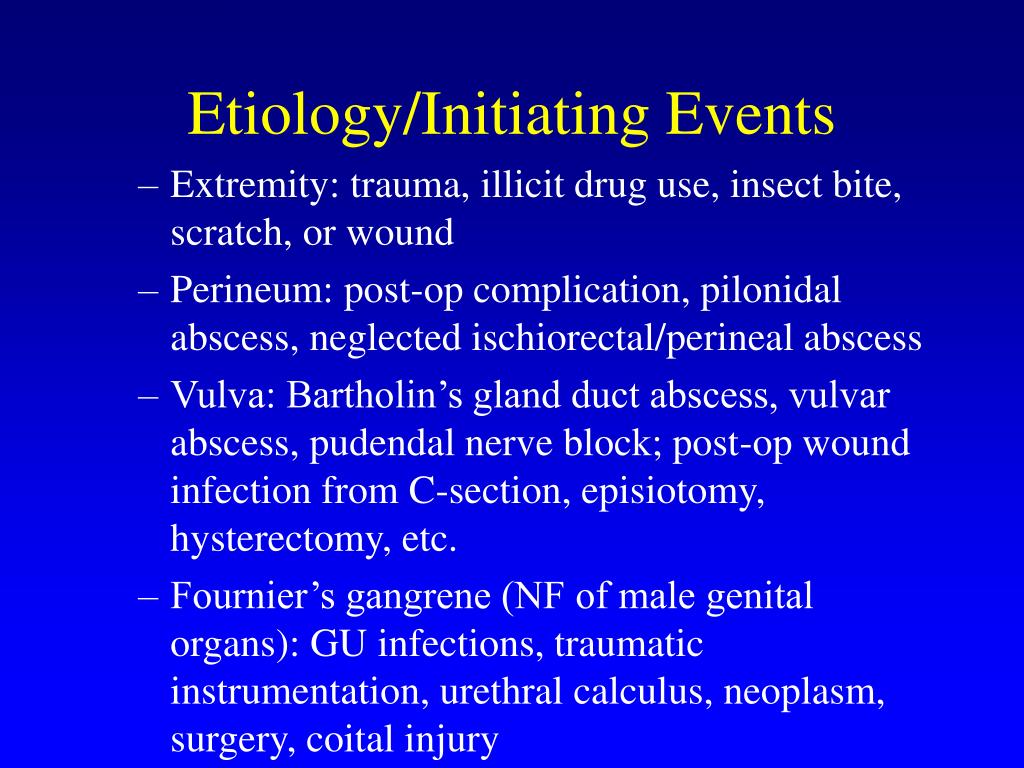
Additional Contributors
Karen Seiter, MD Professor, Department of Internal Medicine, Division of Oncology/Hematology, New York Medical College
Karen Seiter, MD is a member of the following medical societies: American Association for Cancer Research, American College of Physicians, American Society of Hematology
Disclosure: Received honoraria from Novartis for speaking and teaching; Received consulting fee from Novartis for speaking and teaching; Received honoraria from Celgene for speaking and teaching.
Dysregulated iron metabolism in polycythemia vera: etiology and consequences
Spivak JL. Myeloproliferative neoplasms. N Engl J Med. 2017;377:895–6.
PubMed
PubMed Central
Google Scholar
Polycythemia vera: the natural history of 1213 patients followed for 20 years. Gruppo Italiano Studio Policitemia. Ann Intern Med. 1995;123:656–64.
Google Scholar
Passamonti F, Rumi E, Pungolino E, Malabarba L, Bertazzoni P, Valentini M, et al. Life expectancy and prognostic factors for survival in patients with polycythemia vera and essential thrombocythemia. Am J Med. 2004;117:755–61.
PubMed
PubMed Central
Google Scholar
Stein BL, Oh ST, Berenzon D, Hobbs GS, Kremyanskaya M, Rampal RK, et al. Polycythemia vera: an appraisal of the biology and management 10 years after the discovery of JAK2 V617F. J Clin Oncol. 2015;33:3953–60.
CAS
PubMed
PubMed Central
Google Scholar
Gianelli U, Iurlo A, Vener C, Moro A, Fermo E, Bianchi P, et al. The significance of bone marrow biopsy and JAK2V617F mutation in the differential diagnosis between the “early” prepolycythemic phase of polycythemia vera and essential thrombocythemia. Am J Clin Pathol. 2008;130:336–42.
Am J Clin Pathol. 2008;130:336–42.
CAS
PubMed
PubMed Central
Google Scholar
Thiele J, Kvasnicka HM, Muehlhausen K, Walter S, Zankovich R, Diehl V. Polycythemia rubra vera versus secondary polycythemias. A clinicopathological evaluation of distinctive features in 199 patients. Pathol Res Pract. 2001;197:77–84.
CAS
PubMed
PubMed Central
Google Scholar
Beutler E, Larsh SE, Gurney CW. Iron therapy in chronically fatigued, nonanemic women: a double-blind study. Ann Intern Med. 1960;52:378–94.
CAS
PubMed
PubMed Central
Google Scholar
Verdon F, Burnand B, Stubi CL, et al. Iron supplementation for unexplained fatigue in non-anaemic women: double blind randomised placebo controlled trial. BMJ. 2003;326:1124.
CAS
PubMed
PubMed Central
Google Scholar
Krayenbuehl PA, Battegay E, Breymann C, et al. Intravenous iron for the treatment of fatigue in nonanemic, premenopausal women with low serum ferritin concentration. Blood. 2011;118:3222–7.
CAS
PubMed
PubMed Central
Google Scholar
Pratt JJ, Khan KS. Non-anaemic iron deficiency—a disease looking for recognition of diagnosis: a systematic review. Eur J Haematol. 2016;96:618–28.
CAS
PubMed
PubMed Central
Google Scholar
Verstovsek S, Harrison CN, Kiladjian JJ, Miller C, Naim AB, Paranagama DC, et al. Markers of iron deficiency in patients with polycythemia vera receiving ruxolitinib or best available therapy. Leuk Res. 2017;56:52–59. May
CAS
PubMed
PubMed Central
Google Scholar
James C, Ugo V, Le Couédic JP, Staerk J, Delhommeau F, Lacout C, et al.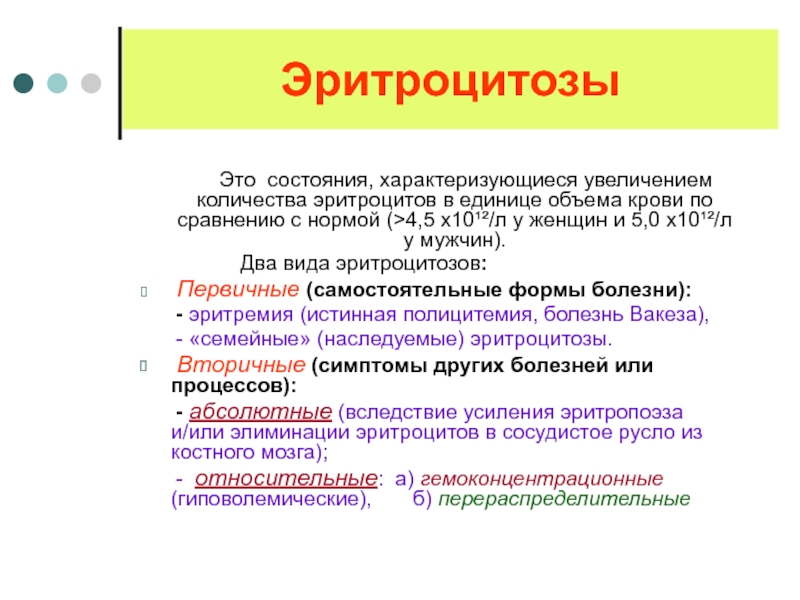 A unique clonal JAK2 mutation leading to constitutive signalling causes polycythaemia vera. Nature. 2005;434:1144–8.
A unique clonal JAK2 mutation leading to constitutive signalling causes polycythaemia vera. Nature. 2005;434:1144–8.
CAS
PubMed
PubMed Central
Google Scholar
Kralovics R, Passamonti F, Buser AS, Teo SS, Tiedt R, Passweg JR, et al. A gain-of-function mutation of JAK2 in myeloproliferative disorders. N Engl J Med. 2005;352:1779–90.
CAS
PubMed
PubMed Central
Google Scholar
Baxter EJ, Scott LM, Campbell PJ, East C, Fourouclas N, Swanton S, et al. Acquired mutation of the tyrosine kinase JAK2 in human myeloproliferative disorders. Lancet. 2005;365:1054–61.
CAS
PubMed
PubMed Central
Google Scholar
Rampal R, Al-Shahrour F, Abdel-Wahab O, Patel JP, Brunel JP, Mermel CH, et al. Integrated genomic analysis illustrates the central role of JAK-STAT pathway activation in myeloproliferative neoplasm pathogenesis. Blood. 2014;123:e123–33.
PubMed
PubMed Central
Google Scholar
Lu X, Huang LJ, Lodish HF. Dimerization by a cytokine receptor is necessary for constitutive activation of JAK2V617F. J Biol Chem. 2008;283:5258–66.
CAS
PubMed
PubMed Central
Google Scholar
Akada H, Yan D, Zou H, Fiering S, Hutchison RE, Mohi MG. Conditional expression of heterozygous or homozygous Jak2V617F from its endogenous promoter induces a polycythemia vera-like disease. Blood. 2010;115:3589–97.
CAS
PubMed
PubMed Central
Google Scholar
Pardanani A, Lasho TL, Finke C, Hanson CA, Tefferi A. Prevalence and clinicopathologic correlates of JAK2 exon 12 mutations in JAK2V617F-negative polycythemia vera. Leukemia. 2007;21:1960–3.
CAS
PubMed
PubMed Central
Google Scholar
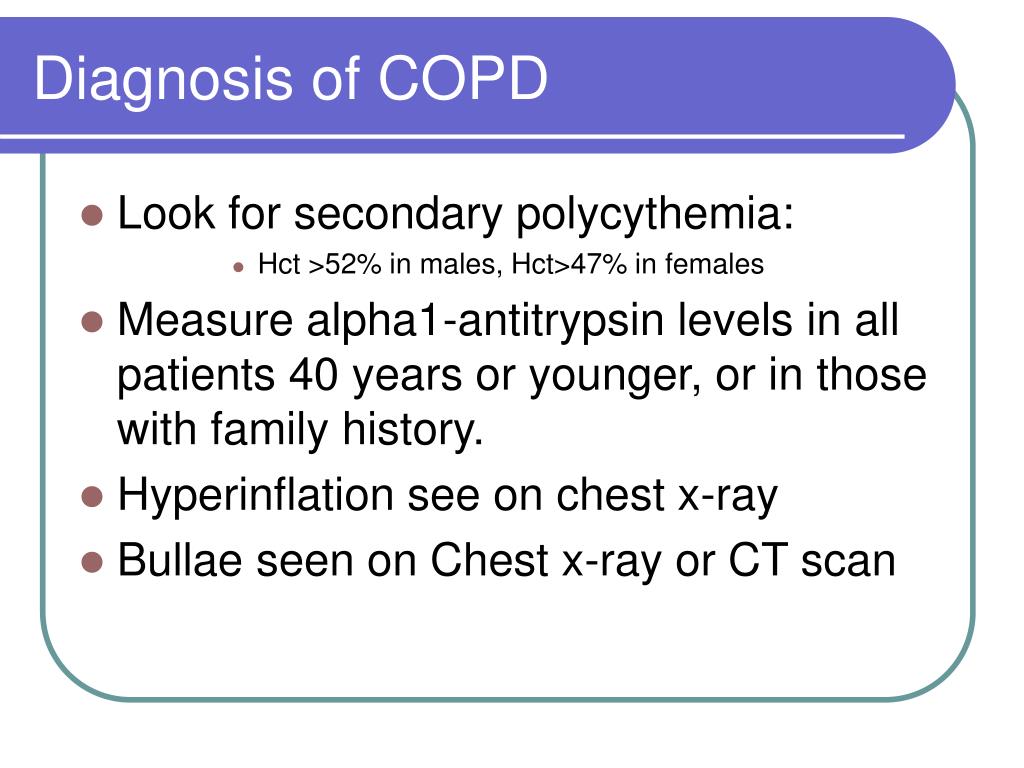
Scott LM, Tong W, Levine RL, Scott MA, Beer PA, Stratton MR, et al. JAK2 exon 12 mutations in polycythemia vera and idiopathic erythrocytosis. N Engl J Med. 2007;356:459–68.
CAS
PubMed
PubMed Central
Google Scholar
Lasho TL, Pardanani A, Tefferi A. LNK mutations in JAK2 mutation-negative erythrocytosis. N Engl J Med. 2010;363:1189–90.
CAS
PubMed
PubMed Central
Google Scholar
Passamonti F, Elena C, Schnittger S, Skoda RC, Green AR, Girodon F, et al. Molecular and clinical features of the myeloproliferative neoplasm associated with JAK2 exon 12 mutations. Blood. 2011;117:2813–6.
CAS
PubMed
PubMed Central
Google Scholar
Scott LM. The JAK2 exon 12 mutations: a comprehensive review. Am J Hematol. 2011;86:668–76.
CAS
PubMed
PubMed Central
Google Scholar
Scott LM, Scott MA, Campbell PJ, Green AR. Progenitors homozygous for the V617F mutation occur in most patients with polycythemia vera, but not essential thrombocythemia. Blood. 2006;108:2435–7. Oct 1
CAS
PubMed
PubMed Central
Google Scholar
Godfrey AL, Chen E, Pagano F, Ortmann CA, Silber Y, Bellosillo B, et al. JAK2V617F homozygosity arises commonly and recurrently in PV and ET, but PV is characterized by expansion of a dominant homozygous subclone. Blood. 2012;120:2704–7.
CAS
PubMed
PubMed Central
Google Scholar
Antonioli E, Guglielmelli P, Poli G, Bogani C, Pancrazzi A, Longo G, et al. Influence of JAK2V617F allele burden on phenotype in essential thrombocythemia. Haematologica. 2008;93:41–8.
CAS
PubMed
PubMed Central
Google Scholar
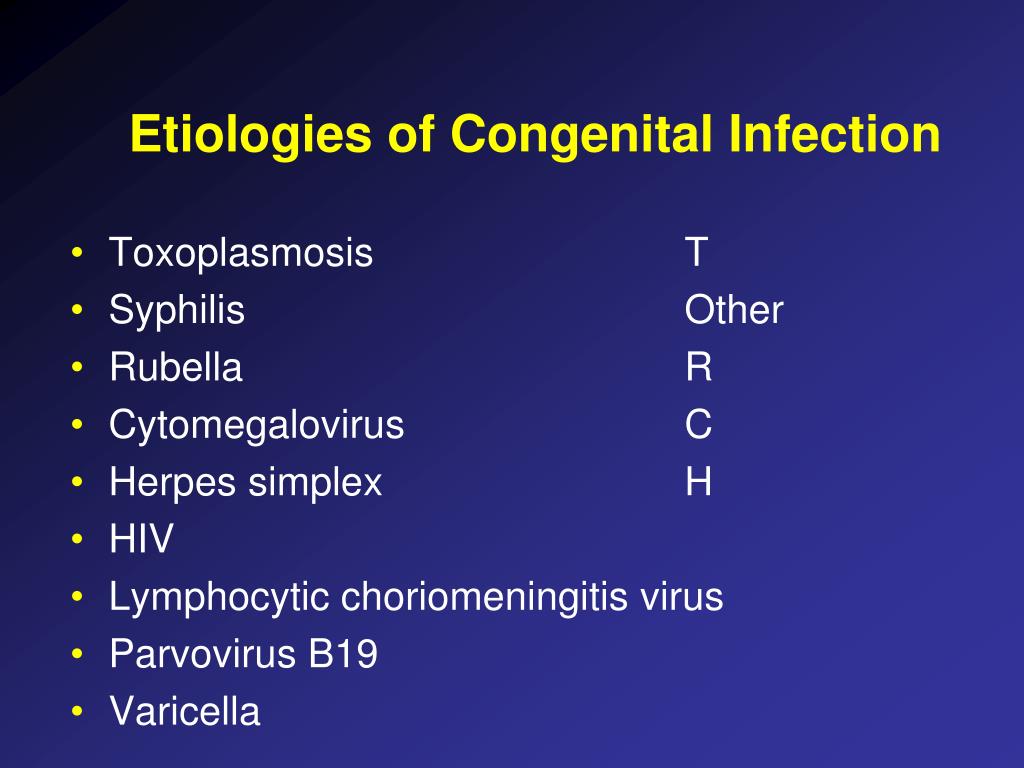
Kittur J, Knudson RA, Lasho TL, Finke CM, Gangat N, Wolanskyj AP, et al. Clinical correlates of JAK2V617F allele burden in essential thrombocythemia. Cancer. 2007;109:2279–84.
PubMed
PubMed Central
Google Scholar
Landolfi R, Marchioli R, Kutti J, Gisslinger H, Tognoni G, Patrono C, et al. Efficacy and safety of low-dose aspirin in polycythemia vera. N Engl J Med. 2004;350:114–24.
CAS
PubMed
PubMed Central
Google Scholar
Vannucchi AM, Kiladjian JJ, Griesshammer M, Masszi T, Durrant S, Passamonti F, et al. Ruxolitinib versus standard therapy for the treatment of polycythemia vera. N Engl J Med. 2015;372:426–35.
PubMed
PubMed Central
Google Scholar
Verstovsek S, Vannucchi AM, Griesshammer M, Masszi T, Durrant S, Passamonti F, et al. Ruxolitinib versus best available therapy in patients with polycythemia vera: 80-week follow-up from the RESPONSE trial. Haematologica. 2016;101:821–9.
CAS
PubMed
PubMed Central
Google Scholar
Mesa R, Verstovsek S, Kiladjian JJ, Griesshammer M, Masszi T, Durrant S, et al. Changes in quality of life and disease-related symptoms in patients with polycythemia vera receiving ruxolitinib or standard therapy. Eur J Haematol. 2016;97:192–200.
CAS
PubMed
PubMed Central
Google Scholar
Bullock GC, Delehanty LL, Talbot AL, Gonias SL, Tong WH, Rouault TA, et al. Iron control of erythroid development by a novel aconitase-associated regulatory pathway. Blood. 2010;116:97–108.
CAS
PubMed
PubMed Central
Google Scholar
Rishi G, Secondes ES, Wallace DF, Subramaniam VN. Hematopoietic deletion of transferrin receptor 2 in mice leads to a block in erythroid differentiation during iron-deficient anemia.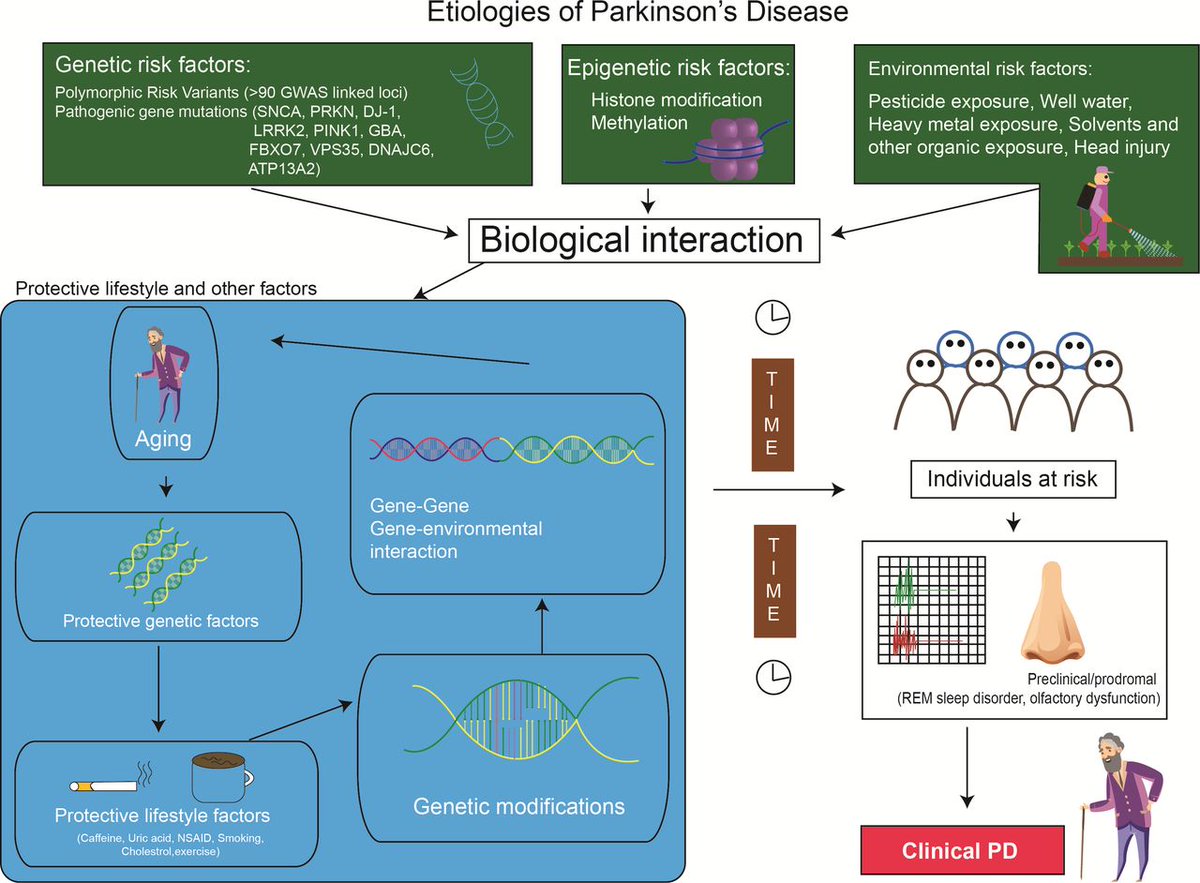 Am J Hematol. 2016;91:812–8.
Am J Hematol. 2016;91:812–8.
CAS
PubMed
PubMed Central
Google Scholar
Khalil S, Holy M, Grado S, Fleming R, Kurita R, Nakamura Y, et al. A specialized pathway for erythroid iron delivery through lysosomal trafficking of transferrin receptor 2. Blood Adv. 2017;1:1181–94.
CAS
PubMed
PubMed Central
Google Scholar
Khalil S, Delehanty L, Grado S, Holy M, White Z 3rd, Freeman K, et al. Iron modulation of erythropoiesis is associated with Scribble-mediated control of the erythropoietin receptor. J Exp Med. 2018;215:661–79.
CAS
PubMed
PubMed Central
Google Scholar
Sanchez M, Galy B, Dandekar T, Bengert P, Vainshtein Y, Stolte J, et al. Iron regulation and the cell cycle: identification of an iron-responsive element in the 3’-untranslated region of human cell division cycle 14A mRNA by a refined microarray-based screening strategy. J Biol Chem. 2006;281:22865–74.
CAS
PubMed
PubMed Central
Google Scholar
Marchioli R, Vannucchi AM, Barbui T. Treatment target in polycythemia vera. N Engl J Med. 2013;368:1556.
PubMed
PubMed Central
Google Scholar
Marchioli R, Finazzi G, Specchia G, Cacciola R, Cavazzina R, Cilloni D, et al. Cardiovascular events and intensity of treatment in polycythemia vera. N Engl J Med. 2013;368:22–33.
CAS
PubMed
PubMed Central
Google Scholar
Grunwald MR, Burke JM, Kuter DJ, Gerds AT, Stein BL, Savona MR, et al. Patient-reported symptom burden and peripheral blood counts among patients with polycythemia vera: an analysis from the REVEAL study. Blood. 2017;130:2924.
Google Scholar

Scherber RM, Geyer HL, Dueck AC, Kosiorek HE, Finazzi G, Cavazzina R, et al. The potential role of hematocrit control on symptom burden among polycythemia vera patients: Insights from the CYTO-PV and MPN-SAF patient cohorts. Leuk Lymphoma. 2017;58:1481–7.
CAS
PubMed
PubMed Central
Google Scholar
Berk PD, Goldberg JD, Donovan PB, Fruchtman SM, Berlin NI, Wasserman LR. Therapeutic recommendations in polycythemia vera based on Polycythemia Vera Study Group protocols. Semin Hematol. 1986;23:132–43.
CAS
PubMed
PubMed Central
Google Scholar
Pollitt E, Hathirat P, Kotchabhakdi NJ, Missell L, Valyasevi A. Iron deficiency and educational achievement in Thailand. Am J Clin Nutr. 1989;50(3 Suppl):687–96. discussion 696-7.
CAS
Google Scholar
Ribot B, Aranda N, Viteri F, Hernández-Martínez C, Canals J, Arija V. Depleted iron stores without anaemia early in pregnancy carries increased risk of lower birthweight even when supplemented daily with moderate iron. Hum Reprod. 2012;27:1260–6.
CAS
PubMed
PubMed Central
Google Scholar
Ballin A, Berar M, Rubinstein U, et al. Iron state in female adolescents. Am J Dis Child. 1992;146:803–5.
CAS
PubMed
PubMed Central
Google Scholar
Patterson AJ, Brown WJ, Roberts DC. Dietary and supplement treatment of iron deficiency results in improvements in general health and fatigue in Australian women of childbearing age. Am J Clin Nutr. 2001;20:337–42.
CAS
Google Scholar
Ackrell BA, Maguire JJ, Dallman PR, et al. Effect of iron deficiency on succinate- and NADH-ubiquinone oxidoreductases in skeletal muscle mitochondria.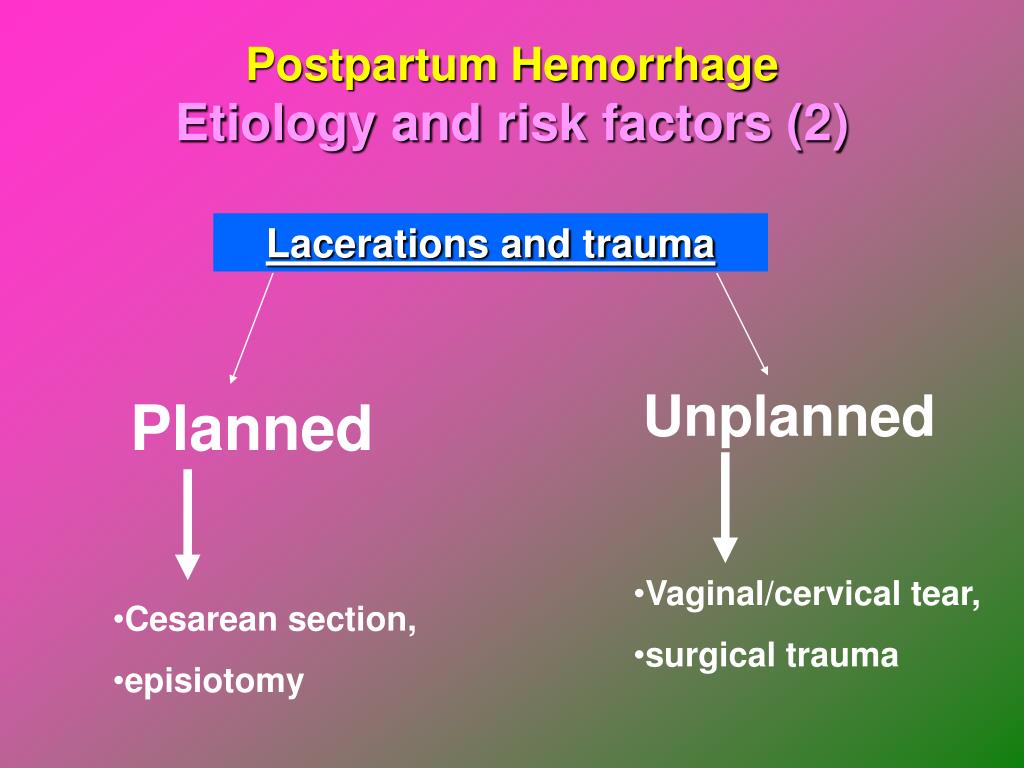 J Biol Chem. 1984;259:10053–9.
J Biol Chem. 1984;259:10053–9.
CAS
PubMed
PubMed Central
Google Scholar
McLane JA, Fell RD, McKay RH, et al. Physiological and biochemical effects of iron deficiency on rat skeletal muscle. Am J Physiol. 1981;241:C47–54.
CAS
PubMed
PubMed Central
Google Scholar
Bastian TW, von Hohenberg WC, Mickelson DJ, Lanier LM, Georgieff MK. Iron deficiency impairs developing hippocampal neuron gene expression, energy metabolism, and dendrite complexity. Dev Neurosci. 2016;38:264–76.
CAS
PubMed
PubMed Central
Google Scholar
Oexle H, Gnaiger E, Weiss G. Iron-dependent changes in cellular energy metabolism: influence on citric acid cycle and oxidative phosphorylation. Biochim Biophys Acta. 1999;1413:99–107.
CAS
PubMed
PubMed Central
Google Scholar
Xu W, Barrientos T, Mao L, Rockman HA, Sauve AA, Andrews NC. Lethal cardiomyopathy in mice lacking transferrin receptor in the heart. Cell Rep. 2015;13:533–45.
PubMed
PubMed Central
Google Scholar
Harper ME, Patrick J, Willis JS. The absence of adapted sodium and potassium transport in erythrocytes of cerebral palsied children with secondary malnutrition. Eur J Clin Nutr. 1990;44:549–58.
CAS
PubMed
PubMed Central
Google Scholar
Yu Y, Kovacevic Z, Richardson DR. Tuning cell cycle regulation with an iron key. Cell Cycle. 2007;6:1982–94.
CAS
PubMed
PubMed Central
Google Scholar
Anker SD, Comin Colet J, Filippatos G, Willenheimer R, Dickstein K, Drexler H, et al. Ferric carboxymaltose in patients with heart failure and iron deficiency. N Engl J Med. 2009;361:2436–48.
CAS
PubMed
PubMed Central
Google Scholar
Ponikowski P, van Veldhuisen DJ, Comin-Colet J, Ertl G, Komajda M, Mareev V, et al. Beneficial effects of long-term intravenous iron therapy with ferric carboxymaltose in patients with symptomatic heart failure and iron deficiency. Eur Heart J. 2015;36:657–68.
CAS
PubMed
PubMed Central
Google Scholar
Filippatos G, Farmakis D, Colet JC, Dickstein K, Lüscher TF, Willenheimer R, et al. Intravenous ferric carboxymaltose in iron-deficient chronic heart failure patients with and without anaemia: a subanalysis of the FAIR-HF trial. Eur J Heart Fail. 2013;15:1267–76.
CAS
PubMed
PubMed Central
Google Scholar
Anker SD, Kirwan BA, van Veldhuisen DJ, Filippatos G, Comin-Colet J, Ruschitzka F, et al. Effects of ferric carboxymaltose on hospitalisations and mortality rates in iron-deficient heart failure patients: an individual patient data meta-analysis. Eur J Heart Fail. 2018;20:125–33.
CAS
Google Scholar
Hallberg L, Bengtsson C, Lapidus L, Lindstedt G, Lundberg PA, Hultén L. Screening for iron deficiency: an analysis based on bone-marrow examinations and serum ferritin determinations in a population sample of women. Br J Haematol. 1993;85:787–98.
CAS
Google Scholar
Mast AE, Blinder MA, Gronowski AM, Chumley C, Scott MG. Clinical utility of the soluble transferrin receptor and comparison with serum ferritin in several populations. Clin Chem. 1998;44:45–51.
CAS
PubMed
PubMed Central
Google Scholar
Punnonen K, Irjala K, Rajamäki A. Serum transferrin receptor and its ratio to serum ferritin in the diagnosis of iron deficiency. Blood. 1997;89:1052–7.
CAS
Google Scholar
Goodnough LT, Nemeth E, Ganz T. Detection, evaluation, and management of iron-restricted erythropoiesis. Blood. 2010;116:4754–61.
CAS
Google Scholar
Suominen P, Punnonen K, Rajamaki A, Irjala K. Serum transferrin receptor and transferrin receptor-ferritin index identify healthy subjects with subclinical iron deficits. Blood. 1998;92:2934–9.
CAS
PubMed
PubMed Central
Google Scholar
Cook JD, Flowers CH, Skikne BS. The quantitative assessment of body iron. Blood. 2003;101:3359–64.
CAS
PubMed
PubMed Central
Google Scholar
Labbé RF, Vreman HJ, Stevenson DK. Zinc protoporphyrin: a metabolite with a mission. Clin Chem. 1999;45:2060–72.
PubMed
PubMed Central
Google Scholar
Labbé RF, Dewanji A. Iron assessment tests: transferrin receptor vis-à-vis zinc protoporphyrin. Clin Biochem. 2004;37:165–74.
PubMed
PubMed Central
Google Scholar
Kiss JE, Steele WR, Wright DJ, Mast AE, Carey PM, Murphy EL, et al. NHLBI Retrovirus Epidemiology Donor Study-II (REDS-II). Laboratory variables for assessing iron deficiency in REDS-II Iron Status Evaluation (RISE) blood donors. Transfusion. 2013;53:2766–75.
CAS
PubMed
PubMed Central
Google Scholar
Pigeon C, Ilyin G, Courselaud B, Leroyer P, Turlin B, Brissot P, et al. A new mouse liver-specific gene, encoding a protein homologous to human antimicrobial peptide hepcidin, is overexpressed during iron overload. J Biol Chem. 2001;276:7811–9.
CAS
PubMed
PubMed Central
Google Scholar
Park CH, Valore EV, Waring AJ, Ganz T. Hepcidin, a urinary antimicrobial peptide synthesized in the liver. J Biol Chem. 2001;276:7806–10.
CAS
PubMed
PubMed Central
Google Scholar
Ganz T. Hepcidin-a regulator of intestinal iron absorption and iron recycling by macrophages. Best Pract Res Clin Haematol. 2005;18:171–82.
CAS
PubMed
PubMed Central
Google Scholar
Nemeth E, Tuttle MS, Powelson J, Vaughn MB, Donovan A, Ward DM, et al. Hepcidin regulates cellular iron efflux by binding to ferroportin and inducing its internalization. Science. 2004;306:2090–3.
CAS
PubMed
PubMed Central
Google Scholar
Donovan A, Lima CA, Pinkus JL, Pinkus GS, Zon LI, Robine S, et al. The iron exporter ferroportin/Slc40a1 is essential for iron homeostasis. Cell Metab. 2005;1:191–200.
CAS
PubMed
PubMed Central
Google Scholar
Marro S, Chiabrando D, Messana E, Stolte J, Turco E, Tolosano E, et al. Heme controlsferroportin1 (FPN1) transcription involving Bach2, Nrf2 and a MARE/ARE sequence motif at position -7007 of the FPN1 promoter. Haematologica. 2010;95:1261–8.
CAS
PubMed
PubMed Central
Google Scholar
Knutson MD, Vafa MR, Haile DJ, Wessling-Resnick M. Iron loading and erythrophagocytosis increase ferroportin 1 (FPN1) expression in J774 macrophages. Blood. 2003;102:4191–7.
CAS
PubMed
PubMed Central
Google Scholar
Nemeth E, Rivera S, Gabayan V, Keller C, Taudorf S, Pedersen BK, et al. IL-6 mediates hypoferremia of inflammation by inducing the synthesis of the iron regulatory hormone hepcidin. J Clin Invest. 2004;113:1271–6.
CAS
PubMed
PubMed Central
Google Scholar
Nicolas G, Chauvet C, Viatte L, Danan JL, Bigard X, Devaux I, et al. The gene encoding the iron regulatory peptide hepcidin is regulated by anemia, hypoxia, and inflammation. J Clin Invest. 2002;110:1037–44.
CAS
PubMed
PubMed Central
Google Scholar
Truksa J, Peng H, Lee P, Beutler E. Bone morphogenetic proteins 2, 4, and 9 stimulate murine hepcidin 1 expression independently of Hfe, transferrin receptor 2 (Tfr2), and IL-6. Proc Natl Acad Sci USA. 2006;103:10289–93.
CAS
PubMed
PubMed Central
Google Scholar
Babitt JL, Huang FW, Xia Y, Sidis Y, Andrews NC, Lin HY. Modulation of bone morphogenetic protein signaling in vivo regulates systemic iron balance. J Clin Invest. 2007;117:1933–9.
CAS
PubMed
PubMed Central
Google Scholar
Schmidt PJ, Toran PT, Giannetti AM, Bjorkman PJ, Andrews NC. The transferrin receptor modulates Hfe-dependent regulation of hepcidin expression. Cell Metab. 2008;7:205–14.
PubMed
PubMed Central
Google Scholar
Smith CL, Arvedson TL, Cooke KS, Dickmann LJ, Forte C, Li H, et al. IL-22 regulates iron availability in vivo through the induction of hepcidin. J Immunol. 2013;191:1845–55.
CAS
PubMed
PubMed Central
Google Scholar
Wrighting DM, Andrews NC. Interleukin-6 induces hepcidin expression through STAT3. Blood. 2006;108:3204–9.
CAS
PubMed
PubMed Central
Google Scholar
Vinzio S, Ciarloni L, Schlienger JL, Rohr S, Mechine A, Goichot B. Isolated microcytic anemia disclosing a unicentric Castleman disease: the interleukin-6/hepcidin pathway? Eur J Intern Med. 2008;19:367–9.
CAS
PubMed
PubMed Central
Google Scholar
Kearney SL, Nemeth E, Neufeld EJ, Thapa D, Ganz T, Weinstein DA, et al. Urinary hepcidin in congenital chronic anemias. Pediatr Blood Cancer. 2007;48:57–63.
PubMed
PubMed Central
Google Scholar
Origa R, Galanello R, Ganz T, Giagu N, Maccioni L, Faa G, et al. Liver iron concentrations and urinary hepcidin in beta-thalassemia. Haematologica. 2007;92:583–8.
CAS
PubMed
PubMed Central
Google Scholar
Kemna EH, Kartikasari AE, van Tits LJ, Pickkers P, Tjalsma H, Swinkels DW. Regulation of hepcidin: insights from biochemical analyses on human serum samples. Blood Cells Mol Dis. 2008;40:339–46.
CAS
PubMed
PubMed Central
Google Scholar
Pak M, Lopez MA, Gabayan V, Ganz T, Rivera S. Suppression of hepcidin during anemia requires erythropoietic activity. Blood. 2006;108:3730–5.
CAS
PubMed
PubMed Central
Google Scholar
Tanno T, Bhanu NV, Oneal PA, Goh SH, Staker P, Lee YT, et al. High levels of GDF15 in thalassemia suppress expression of the iron regulatory protein hepcidin. Nat Med. 2007;13:1096–101.
CAS
PubMed
PubMed Central
Google Scholar
Casanovas G, Vujić Spasic M, Casu C, Rivella S, Strelau J, Unsicker K, et al. The murine growth differentiation factor 15 is not essential for systemic iron homeostasis in phlebotomized mice. Haematologica. 2013;98:444–7.
CAS
PubMed
PubMed Central
Google Scholar
Santini V, Girelli D, Sanna A, Martinelli N, Duca L, Campostrini N, et al. Hepcidin levels and their determinants in different types of myelodysplastic syndromes. PLoS ONE. 2011;6:e23109.
CAS
PubMed
PubMed Central
Google Scholar
Kautz L, Jung G, Valore EV, Rivella S, Nemeth E, Ganz T. Identification of erythroferrone as an erythroid regulator of iron metabolism. Nat Genet. 2014;46:678–84.
CAS
PubMed
PubMed Central
Google Scholar
Ganz T, Jung G, Naeim A, Ginzburg Y, Pakbaz Z, Walter PB, et al. Immunoassay for human serum erythroferrone. Blood. 2017;130:1243–6.
CAS
PubMed
PubMed Central
Google Scholar
Peyssonnaux C, Zinkernagel AS, Schuepbach RA, Rankin E, Vaulont S, Haase VH, et al. Regulation of iron homeostasis by the hypoxia-inducible transcription factors (HIFs). J Clin Invest. 2007;117:1926–32.
CAS
PubMed
PubMed Central
Google Scholar
Piperno A, Galimberti S, Mariani R, Pelucchi S, Ravasi G, Lombardi C, et al. Modulation of hepcidin production during hypoxia-induced erythropoiesis in humans in vivo: data from the HIGHCARE project. Blood. 2011;117:2953–9.
CAS
PubMed
PubMed Central
Google Scholar
Braliou GG, Verga Falzacappa MV, Chachami G, Casanovas G, Muckenthaler MU, Simos G. 2-Oxoglutarate-dependent oxygenases control hepcidin gene expression. J Hepatol. 2008;48:801–10.
CAS
PubMed
PubMed Central
Google Scholar
Liu Q, Davidoff O, Niss K, Haase VH. Hypoxia-inducible factor regulates hepcidin via erythropoietin-induced erythropoiesis. J Clin Invest. 2012;122:4635–44.
CAS
PubMed
PubMed Central
Google Scholar
Mastrogiannaki M, Matak P, Mathieu JR, Delga S, Mayeux P, Vaulont S, et al. Hepatic hypoxia-inducible factor-2 down-regulates hepcidin expression in mice through an erythropoietin-mediated increase in erythropoiesis. Haematologica. 2012;97:827–34.
CAS
PubMed
PubMed Central
Google Scholar
Shah YM, Matsubara T, Ito S, Yim SH, Gonzalez FJ. Intestinal hypoxia-inducible transcription factors are essential for iron absorption following iron deficiency. Cell Metab. 2009;9:152–64.
CAS
PubMed
PubMed Central
Google Scholar
Frise MC, Cheng HY, Nickol AH, Curtis MK, Pollard KA, Roberts DJ, et al. Clinical iron deficiency disturbs normal human responses to hypoxia. J Clin Invest. 2016;126:2139–50.
PubMed
PubMed Central
Google Scholar
Ghosh MC, Zhang DL, Jeong SY, Kovtunovych G, Ollivierre-Wilson H, Noguchi A, et al. Deletion of iron regulatory protein 1 causes polycythemia and pulmonary hypertension in mice through translational derepression of HIF2α. Cell Metab. 2013;17:271–81.
CAS
PubMed
PubMed Central
Google Scholar
Asshoff M, Petzer V, Warr MR, Haschka D, Tymoszuk P, Demetz E, et al. Momelotinib inhibits ACVR1/ALK2, decreases hepcidin production, and ameliorates anemia of chronic disease in rodents. Blood. 2017;129:1823–30.
CAS
PubMed
PubMed Central
Google Scholar
Casu C, Oikonomidou PR, Chen H, Nandi V, Ginzburg Y, Prasad P, et al. Minihepcidin peptides as disease modifiers in mice affected by β-thalassemia and polycythemia vera. Blood. 2016;128:265–76.
CAS
PubMed
PubMed Central
Google Scholar
Grisouard J, Li S, Kubovcakova L, Rao TN, Meyer SC, Lundberg P, et al. JAK2 exon 12 mutant mice display isolated erythrocytosis and changes in iron metabolism favoring increased erythropoiesis. Blood. 2016;128:839–51.
CAS
PubMed
PubMed Central
Google Scholar
Tarkun P, Mehtap O, Atesoğlu EB, Geduk A, Musul MM, Hacihanefioglu A. Serum hepcidin and growth differentiation factor-15 (GDF-15) levels in polycythemia vera and essential thrombocythemia. Eur J Haematol. 2013;91:228–35.
CAS
PubMed
PubMed Central
Google Scholar
Hasselbalch HC, Bjørn ME. MPNs as inflammatory diseases: the evidence, consequences, and perspectives. Mediators Inflamm. 2015;2015:102476
PubMed
PubMed Central
Google Scholar
Nemeth E, Ganz T. Anemi. of inflammation. Hematol Oncol Clin North Am. 2014;28:671–81.
PubMed
PubMed Central
Google Scholar
Lee C, Lim HK, Sakong J, Lee YS, Kim JR, Baek SH. Janus kinase-signal transducer and activator of transcription mediates phosphatidic acid-induced interleukin (IL)-1beta and IL-6 production. Mol Pharmacol. 2006;69:1041–7.
CAS
PubMed
PubMed Central
Google Scholar
Schächner E, Ronen M, Pinkhas J, Djaldetti M. Iron absorption in patients with polycythemia vera: a comparative study using the whole-body counter and the ferrous sulfate absorption test. Eur J Nucl Med. 1978;3:125–7.
PubMed
PubMed Central
Google Scholar
Landolfi R, Cipriani MC, Novarese L. Thrombosis and bleeding in polycythemia vera and essential thrombocythemia: pathogenetic mechanisms and prevention. Best Pract Res Clin Haematol. 2006;19:617–33.
CAS
PubMed
PubMed Central
Google Scholar
DeLoughery TG. Iron deficiency anemia. Med Clin North Am. 2017;101:319–32.
PubMed
PubMed Central
Google Scholar
Casu C, Nemeth E, Rivella S. Hepcidin agonists as therapeutic tools. Blood. 2018;131:1790–4.
CAS
PubMed
PubMed Central
Google Scholar
Pagani A, Nai A, Corna G, Bosurgi L, Rovere-Querini P, Camaschella C, et al. Low hepcidin accounts for the proinflammatory status associated with iron deficiency. Blood. 2011;118:736–46.
CAS
PubMed
PubMed Central
Google Scholar
Motta I, Scaramellini N, Cappellini MD. Investigational drugs in phase I and phase II clinical trials for thalassemia. Expert Opin Investig Drugs. 2017;26:793–802.
CAS
PubMed
PubMed Central
Google Scholar
Neonatal Polycythemia: A Review | ClinMed International Library
Clinical Medical
Reviews and Case Reports
Department of Pediatrics, Ufuk University, Turkey
*Corresponding author: Demet Altun, Department of Pediatrics, Ufuk University Faculty of Medicine, Ankara, Turkey, Tel: +90-312-204-4000, E-mail: [email protected]
Clin Med Rev Case Rep, CMRCR-3-142, (Volume 3, Issue 11), Review Article; ISSN: 2378-3656
Received: September 03, 2016 | Accepted: November 21, 2016 | Published: November 23, 2016
Citation: Sarici SU, Ozcan M, Altun D (2016) Neonatal Polycythemia: A Review. Clin Med Rev Case Rep 3:142. 10.23937/2378-3656/1410142
Copyright: © 2016 Sarıcı SU, et al. This is an open-access article distributed under the terms of the Creative Commons Attribution License, which permits unrestricted use, distribution, and reproduction in any medium, provided the original author and source are credited.
Abstract
Polycythemia in the newborn is defined as either venous hematocrit or hemoglobin levels above 65% and 22 g/dl, respectively. Its incidence is reported between 1 to 5%. In this article definition and epidemiology of polycythemia, physiological changes in postnatal hematocrit levels, relationship between polycythemia and hyperviscosity, pathophysiology and diagnosis of polycythemia, etiology, clinical signs and complications of polycythemia with a special emphasis on treatment algorithms and long-term neurodevelopmental outcome considering all current review articles and meta-analyses are reviewed.
Keywords
Hyperviscosity, Newborn, Polycythemia, Partial exchange transfusion
Introduction
Definition and epidemiology
Polycythemia in the newborn is defined as either venous hematocrit or hemoglobin levels above 65% and 22 g/dl, respectively [1-4]. Its incidence is reported between 1 to 5% [3-8]. Its risk is higher in newborns born to mothers living in high altitudes whereas the risk decreases in premature newborns born before 34th week of gestation [9-11].
Physiological changes in postnatal hematocrit levels
Hematocrit levels increase in comparison to cord levels making a peak at around 2nd hour of life and a plateau between 2-4 hours of life, and then return to cord blood levels at 12 to 18 hours of life. The postnatal age at which newborns are screened for polycythemia is, thus, very important with this respect. The incidence of polycythemia may increase up to 20% when screened at 2nd hour whereas its incidence may be detected as low as 2% when its screening is performed at 12 to 18 hours postnatally [12].
Capillary and venous hematocrit measurements
Hematocrit measurement can be made in both capillary and venous samples. However erythtrocyte concentration and the ultimately measured hematocrit level show a great variability depending on the route where the blood sample is obtained. Hematocrit measurement in capillary samples gives higher results in comparison to venous samples because of the rouleaux formation and migration of erythrocytes along the vascular wall, and sensitivity to variations in blood flow [9].
Due to the variations in and weaknesses of capillary measurement, gold standard blood sample to be used in the diagnosis of polycythemia is venous blood sample. In general hematocrit level in capillary samples is found 5-15% higher than that in venous samples, and hematocrit level in peripheral blood samples is higher than that in central venous samples. In a study conducted on newborns with a peripheral venous hematocrit level of ≥ 65%, capillary, peripheral venous and central (umbilical) venous hematocrit levels were reported as 75%, 71% and 63%, respectively [4]. In parallel with this finding, only 3-5% of newborns diagnosed to have polycythemia on screening with capillary measurements were found hyperviscosis [3,13,14], whereas approximately 50% of newborns detected as polycythemic in umbilical cord blood samples had hyperviscosity [15].
Warming the heel before obtaining capillary sample via heel-stick may aid in providing a closer correlation between the measurements of capillary and venous blood samples. Capillary samples may be used for screening, however all high values should be confirmed by a venous sample for the diagnosis of polycythemia [10,11] since approximately 18% of those tested and misdiagnosed with an incorrect method at 2nd hour of life would be subjected to a potential harmful and expensive treatment [12].
Methods of Hematocrit Analysis
Two methods are available
Automatized hematologic analysis: Hematocrit value is indirectly calculated from mean corpuscular volume and hemoglobin values in automatic blood analyzers.
Micro-centrifuge method: Blood is collected into heparinized microcapillary tubes and centrifuged at 10000-15000 rpm for 3-5 minutes. Plasma is separated and packed red cell volume is measured to give the hematocrit. An automatized analyzer gives lower values when compared to the centrifugation method [11]. In most of the studies conducted about polycythemia, centrifugation method has been used.
Relationship between Polycythemia and Hyperviscosity
Hyperviscosity and polycythemia are different definitions although they are often used interchangeably. Polycythemia is the abnormal increase in erythrocyte mass, and defined as a venous hematocrit level of > 65% in newborns. Viscosity is, on the other hand, the property of the liquid which provides the resistance of that liquid against placing between the two layers of the fluid. Viscosity equals to the ratio of powers effective on the unit square of the liquid or sliding tension to sliding velocity. Sliding resistance of the liquid or its response to changes in sliding velocity is somewhat different from other liquids as whole blood is not a homogenous liquid [9]. The relationship between hematocrit and viscosity is linear below the hematocrit levels of 60%, whereas progressive increases over 65% show a logarithmic relationship [4,13]. This means even a small increase in hematocrit over the levels of > 65% causes a dramatic increase in viscosity. Hyperviscosity is the decrease of blood fluidity, and defined as a viscosity above the 2 standard deviation of the mean. Hyperviscosity syndrome, on the other hand, is a syndrome of circulatory disorder developing secondary to increase in resistance against blood flow [9,11]. Except for the hematocrit level, there are a lot of factors affecting whole blood viscosity. Leukocytes, platelets, plasma proteins, immunoglobulins and coagulation factors are the other cellular elements which affect the whole blood viscosity. Hyperviscosity has been detected in 47% of newborns with polycythemia [15], whereas polycythemia has been detected as the etiologic factor in only 24% of newborns with hyperviscosity [11,15,16]. It is not easy to measure viscosity, and Wells-Brookfield viscometer is used with this aim. However most of the neonatal intensive care units do not have this device, and high hematocrit level and the presence of polycythemia-associated symptoms are taken into account as the determinator of hyperviscosity [9,11].
Pathophysiology
Polycythemia may cause some symptoms and complications due to the metabolic and hemodynamic effects of hyperviscosity, microcirculatory hipoperfusion, decreased organ blood flow and multisystem organ dysfunction, destruction of increased erythrocyte mass, and hyper/hypovolemia. Tissue hypoxia, acidosis and hypoglycemia develop secondarily to regional effects of hyperviscosity. Tissue blood supply and oxygenation are disrupted. Oxygen carrying capacity is determined by the hemoglobin level and blood flow, it is optimal at the normal hematocrit levels, and oxygen transport is decreased at low hematocrit levels as the oxygen binding capacity decreases [17]. Increase of blood volume, while the hematocrit is the same, increases blood flow and oxygen transport by decreasing peripheral vascular resistance with vasodilatation. This mechanism constitutes the basis of treatment of polycythemia [7]. With polycythemia/hyperviscosity, decreases in cerebral blood flow, arterial glucose concentration, cerebral glucose up take and disturbed cerebral glucose distribution have been reported [17,18].
Decreased microcirculation has been deemed responsible for the morbidity associated with polycythemia. Thrombi ocurring in microcirculation may cause symptoms in central nervous system, kidneys, surrenal glands, cardiopulmonary and gastrointestinal systems [19]. Drew, et al. [15] have demonstrated that the primary factor determining the neurological prognosis in polycythemia/hyperviscosity syndrome is hyperviscosity [20]. As a conclusion perfusion and tissue oxygenation are disturbed, plasma glucose concentration decreases, cerebral glucose uptake is disturbed and risk of cerebral morbidity is increased with microthrombi formation as the viscosity increases [7,17,21]. In neonatal polycythemia increased destruction of increased erythrocyte mass with a relatively shorter erythrocyte life span primarily contributes to hyperbilirubinemia. Hypervolemia may lead to congestive heart failure, pulmonary edema and cardiopulmonary failure, and hypovolemia may cause hypoxic-ischemic organ injury [12].
Etiology
Although the etiology of polycythemia is multifactorial, there are two primary mechanisms: passive (erythrocyte transfusion) and active (increased intrauterine erythropoiesis) (Table 1) [22]. Polycythemia secondary to excess erythrocyte transfusion to the fetus (Passive polycythemia) may occur due to delayed clamping of the cord, acute fetal distress and intrapartum hypoxia, twin-to-twin transfusion syndrome, materno-fetal transfusion and holding the baby below the level of introitus [9,11].
In acute fetal distress and peripartum hypoxia transcapillary leakage of plasma occurs and blood flow from placenta to fetus increases, and all these result in increased plasma volume and erythrocyte mass in the fetus [9]. Clamping of the umbilical cord later than 3 minutes after delivery of the baby is defined as “delayed cord clamping” [11]. Carpasso, et al. (2003) have reported a significant decrease in the incidence of polycythemia in newborns whose umbilical cord was clamped early (in first 10 seconds of life) when compared to those whose umbilical cord was clamped late (in 11th to 120th seconds of life) [23]. Therefore, early cord clamping and holding the baby at the level of introitus at the time of delivery could play a role in prevention from polycythemia by minimizing materno-fetal transfusion. On the other hand, however, no statistically significant differences were reported in the hematocrit values of newborns whose umbilical cord was clamped early or late [24]. Twin-to-twin transfusion syndrome is seen in approximately 10% of recipients of monochorionic twins [25].
Polycythemia secondary to increased intrauterine erythropoiesis (active polycythemia) is usually observed in cases of placental insufficiency, intrauterine hypoxia and situations associated with the fetus. Maternal hypertension [26], preeclampsia, maternal diabetes mellitus (type 1 diabetes mellitus and gestational diabetes) [27], maternal cyanotic heart disease, intrauterine growth retardation, postmaturity, living at high altitude and maternal smoking are all associated with this mechanism.
Situations associated with fetus may develop secondarily to problems either in fetus or maternal diseases (Table 1). The incidence of polycythemia in newborns of diabetic mothers varies between 22 to 29%, and polycythemia shows a close correlation with macrosomia and neonatal hypoglycemia in these babies [9,11]. There is an increased risk of polycythemia in diseases with a genetic inheritance such as trisomy 18 and trisomy 13 [28], trisomy 21 [29], and Beckwith-Wiedemann syndrome. Congenital hypothyroidsm, neonatal thyrotoxicosis and congenital adrenal hyperplasia are the other causes of polycythemia associated with the fetus [9,11].
Another etiologic classification of polycythemia is the one based on the volume status of plasma: normovolemic, hypervolemic and hypovolemic [12].
Normovolemic polycythemia
There is an increase in erythrocyte mass while intravascular volume is normal. It is seen in intrauterine growth retardation, maternal hypertension, maternal diabetes mellitus, and in situations associated with placental insufficiency and/or chronic intrauterine hypoxia such as maternal smoking and postmaturity.
Hypervolemic polycythemia
There is an increase in plasma volume in association with an increased erythrocyte mass. It is usually seen in cases of acute transfusion such as maternofetal transfusion and twin-to-twin transfusion.
Hypovolemic polycythemia
It is due to the relative increase of erythrocyte mass in comparison to plasma volume. This situation usually develops due to intravascular dehydration [12].
Clinical Signs and Complications
Most of the newborns (74-90%) are asymptomatic [30,31]. In symptomatic newborns polycythemia may affect many organs and systems. Hyperviscosity, decrease of tissue perfusion, and metabolic complications such as hypoglycemia and hypocalcemia are responsible for clinical signs [10,32]. Nonspecific signs and symptoms such as apnea, cyanosis, feeding problems, vomiting, irritability, jitteriness, tremor, lethargy, respiratory distress and seizures may be seen [16]. The most commonly encountered problems in severely symptomatic newborns with polycythemia are central nervous system disorders [11,32,33].
Cardiopulmonary complications (Cardiomegaly, increase in pulmonary vascular resistance and decrease in cardiac output) with tachycardia and tachypnea may develop [32].
Although polycythemia and hyperviscosity have been suggested responsible for the pathogenesis of necrotizing enterocolitis in term and near-term newborns [34,35], partial exchange transfusion itself, performed to lower the hematocrit, has been reported to cause necrotizing enterocolitis [36-38].
Renal problems encountered in polycythemia are decrease in glomerular filtration rate, oliguria, hematuria, proteinuria and renal vein thrombosis [16,39].
Of the metabolic problems, the most commonly encountered is hypoglycemia (12-40%). In addition to cerebral blood flow, glucose carrying capacity also decreases in polycythemia. As a result plasma glucose concentration, especially venous one is lower than normal [9]. Hypocalcemia and hyperbilirubinemia may also be seen in polycythemic newborns [9,11]. The level of calcitonin gene related peptide (CGRP) has been shown to be high in polycythemic newborns. This peptide regulates vascular tonus stimulating vasodilatation and leads to hypocalcemia, and high levels of CGRP suggest its role in response to polycythemia [40].
Thrombocytopenia, low antithrombin III levels, and more rarely development of thrombosis are hematological problems encountered in polycythemia [9,11]. As the density of the erythrocytes increases they accumulate in the center of blood flow, and thrombocytes, which are lighter, migrate to periphery of the vascular wall (thrombocyte margination). This causes the number of thrombocytes to be counted lower than the actual count (relative thrombocytopenia) [7,32].
Is Routine Screening Necessary?
Screening is not necessary in asymptomatic conditions [12,22]. Screening may be considered in symptomatic cases and some selected high-risk groups (Small-for-gestational age and large-for-gestational age newborns, newborns of diabetic mothers, monochorionic twins) in the presence of symptoms suggestive of polycythemia. Capillary hematocrit measurement is the method of choice for screening.
Treatment
In clinical practice one of the most commonly encountered causes of polycythemia is dehydration. Therefore dehydration, which may develop secondary to causes such as fever, feeding problems, vomiting and diarrhea should be excluded before establishing a diagnosis of polycythemia [9]. Polycythemia due to dehydration may be present in a period extending into the 2-3 days of life in contrast to most of the early causes of polycythemia. Birth weights and actual weights of the babies should be compared, and dehydration should be suspected in case of weight loss over 7% in the first five days of life [22]. In case of dehydration, this situation should be corrected by increasing fluid intake, and hematocrit measurement should be repeated there after [9,11]. All polycythemic newborns should be investigated and followed for neurologic, gastrointestinal and cardiopulmonary signs and commonly encountered complications such as hypoglycemia and hyperbilirubinemia [9,11,22].
Treatment options in polycythemic patients depend on whether they are symptomatic or not and their hematocrit levels (Figure 1) [22].
.
Figure 1: Treatment algorithm in neonatal polycythemia [22].
*Observation consists of monitoring intake, weight and urine output; follow up blood glucose as indicated based on initial results; monitor for symptoms.
View Figure 1
.
Asymptomatic polycythemia
Treatment option in asymptomatic polycythemic patients depends on the hematocrit level (Plethora is not considered as a symptom).
Asymptomatic patients with a peripheral venous hematocrit level between 65-70% should be observed for intake, weight, and urine output providing sufficient hydration and glucose intake. Serum bilirubin and glucose levels should be checked when necessary. While monitoring for the development of symptoms, a venous hematocrit mesurement should be repeated in 12-24 hours. If the repeated hematocrit is below 70% and no symptoms develop, the same policy should be continued for 24 hours and a hematocrit measurement should be repeated.
For the patients with a peripheral venous hematocrit level above 70%, there are a few treatment options. Some clinicians prefer to continue observation with or without providing intravenous hydration. Some other clinicians prefer partial exchange transfusion (PET) in asymptomatic patients only if venous hematocrit is above 75% [41,42], whereas some others advise PET if venous hematocrit is above 70% even in asymptomatic cases (less common) [12,43,44].
Symptomatic polycythemia
The optimal management of symptomatic polycythemic newborns has not been exactly established and there are various approaches. Some clinicians perform PET to lower hematocrit in symptomatic cases with a peripheral venous hematocrit level above 65% [41]. Neonatal hematocrit and blood viscosity peaks between two and four hours after birth, and also considering that most of the studies reporting no favourable long-term benefits of PET on neurodevelopmental outcome have been performed PET after 6 hours of age, PET should be done as soon as possible (in the first 2-4 hours of life) after a decision is made to perform PET [12,22]. On the other hand some clinicians prefer close observation with intravenous hydration. The main aim of intravenous hydration is to prevent the development of hypoglycemia, a common complication of polycythemia. Intravenous fluid should be provided for the first 24 to 48 hours of age at a rate of at least 100 ml/kg per day, including glucose at a rate 6 to 8 mg/kg per min. With this approach a PET is performed only if there is worsening of symptoms, such as persistent hypoglycemia, or persistent cyanosis/apnea, or gastrointestinal symptoms [22].
PET treatment
Isovolumetric PET reduces hematocrit without causing hypovolemia. Although PET acutely demonstrates hemodynamic improvements in cerebral blood flow, cardiac index and oxygen transport [45-51], its long-term effects on psychomotor and neurodevelopmental outcome have not clearly been established and are under debate.
PET can be performed via peripheral or central routes. In peripheral route, peripheral arteries and veins are used. Blood is removed from an arterial catheter, and normal saline is simultaneously infused into a peripheral vein. In central route, blood is removed from an umbilical venous catheter and normal saline is simultaneously infused into a peripheral vein. Umbilical venous catheter also can be used for both removing blood and infusing fluid [11], and this method is the most commonly used method in practice.
The exchange volume is calculated using the following formula:
Exchange volume = (Observed hematocrit – Desired hematocrit*)× Blood volume**Observed hematocrit
*Desired hematocrit is usually 55%.
**Blood volume is 80-90 ml/kg in term babies and 90-100 ml/kg in preterm babies.
In general the exchange volume is 15-20 ml/kg [22].
Crystalloids such as normal saline or ringer’s lactate or colloids such as fresh frozen plasma or 5% albumin can be used for PET. These two types of fluids provide a similar efficacy in lowering hematocrit [11], and normal saline is the fluid of choice to be used in PET since it does not carry the risk of transfusion associated infections, and less expensive and easily available [11,52].
Prognosis
In acute phase the incidence of seizures and intracerebral hemorrhages is higher in polycythemic babies in comparison to normal babies. The early neonatal behaviour of polycythemic babies assessed by Brazelton Behavioral Assessment Scale demonstrated abnormalities of hypotonia, poor state control and irritability [53]. The long-term neurodevelopmental outcome of polycythemic infants remains controversial. Malanand de V Heese (1980) reported no neurodevelopmental differences between polycythemic and normal infants on follow-up at 8 months of age [54]. Delaney-Black, et al. (1989) reported speec hand fine motor abnormalities in polycythemic infants at 2 years of age. In the same children at 7 years of age they noted lower spelling and arithmetic achievement test results and gross motor skills than normal control children [55].
Long-term effects of PET on neurodevelopmental outcome in comparison to conservative treatment have been studied in limited number of studies [30,44,48,53,54,56,57]. In none of these studies a positive effect of PET on long-term neurodevelopmental outcome could be demonstrated. Dempsey and Barrington (2006) have performed a systematic meta-analysis on five of these studies [30,48,53,54,56], and investigated whether PET has positive short-term or long-term neurodevelopmental effects in polycythemic infants [37]. The authors reported no improvement in long-term neurologic outcome (mental developmental index, incidence of developmental delay, and incidence of neurologic diagnoses) after PET in symptomatic or asymptomatic newborns. There was also no improvement in early neurobehavioral assessment scores (Brazelton Neonatal Behavioral Assessment Scale) [37].
In another review, Ozek, et al. (2010) performed a meta-analysis on all of the 7 above-mentioned studies assessing the effect of PET on long-term neurodevelopmental prognosis [30,44,48,53,54,56,57], and evaluated the effect of PET especially on mortality and neurodevelopmental prognosis at 2 years of age and school-age [36]. Secondary parameters evaluated were seizures, cerebral infarct, necrotizing enterocolitis (NEC), hypoglycemia, hyperbilirubinemia, and thrombocytopenia [36]. Although the meta-analysis had limited data (poor follow-up) and did not account for patients who were lost on follow-up, the authors concluded that PET had no significant benefits in asymptomatic patients or those who have mild symptoms [36].
In addition to no documented positive effects of PET on long-term neurodevelopmental prognosis, and after the observation of a significant increase in the incidence of NEC in newborns performed PET [30,36,37,54], PET is currently being preferred in only (symptomatic) newborns who have symptoms associated with hyperviscosity and not in asymptomatic polycythemic newborns [8,12,22,36,37].
Criteria to Write the Review
Our main aim was to help pediatricians and neonatal caregivers who care for newborns to identify and manage those with neonatal polycythemia. On a monthly basis over the last 43 years, we have searched MEDLINE for English-language articles using the terms “neonatal polycythemia”, “hyperviscosity”, “partial exchange transfusion” and “hematocrit”. We also reviewed articles on these subjects in the Cochrane Database of Systematic Reviews, as well as all meta-analyses and recent textbooks, all published from 1982 to 2016.
References
- Oski FA, Naiman JL (1982) Polycythemia and hyperviscosity in the neonatal period. In: Oski FA, Naiman JL, Hematologic Problems in the Newborn. (3rd edn), WB Saunders, New York, 87-96.
- Wiswell TE, Cornish JD, Northam RS (1986) Neonatal polycythemia: frequency of clinical manifestations and other associated findings. Pediatrics 78: 26-30.
- Stevens K, Wirth FH (1980) Incidence of neonatal hyperviscosity at sea level. J Pediatr 97: 118-119.
- Ramamurthy RS, Brans YW (1981) Neonatal polycythemia: I. Criteria for diagnosis and treatment. Pediatrics 68: 168-174.
- Brooks GI, Backes CR (1981) Hyperviscosity secondary to polycythemia in the appropriate for gestational age neonate. J Am Osteopath Assoc 80: 415-418.
- Rawlings JS, Pettett G, Wiswell TE, Clapper J (1982) Estimated blood volumes in polycythemic neonates as a function of birth weight. J Pediatr 101: 594-599.
- Mentzer WC, Glader BE (1998) Polycthemia. In: Taeusch HW, Ballard RA, Gleason CA, Avery’s Diseases of the Newborn. WB Saunders Company, Philadelphia 1104-1106.
- Remon JI, Raghavan A, Maheshwari A (2011) Polycythemia in the newborn. Neoreviews 12: e20-e28.
- Rosenkrantz TS, Oh W (2005) Polycythemia and hyperviscosity in the newborn. In: De Alarcón P, Werner E, Neonatal Hematology. Cambridge University Press, New York, 171-186.
- Upadhyay A, Aggarwal R, Deorari AK, Paul VK (2002) Polycythemia in the newborn. Indian J Pediatr 69: 79-82.
- Jeevasankar M, Agarwal R, Chawla D, Paul VK, Deorari AK (2008) Polycythemia in the newborn. Indian J Pediatr 75: 68-72.
- Mimouni FB, Merlob P, Dollberg S, Mandel D, Israeli Neonatal Association (2011) Neonatal polycythaemia: critical review and a consensus statement of the Israeli Neonatology Association. Acta Paediatr 100: 1290-1296.
- Gross GP, Hathaway WE, McGaughey HR (1973) Hyperviscosity in the neonate. J Pediatr 82: 1004-1012.
- Wirth FH, Goldberg KE, Lubchenco LO (1979) Neonatal hyperviscosity: I. Incidence. Pediatrics 63: 833-836.
- Drew JH, Guaran RL, Grauer S, Hobbs JB (1991) Cord whole blood hyperviscosity: measurement, definition, incidence and clinical features. J Paediatr Child Health 27: 363-365.
- Rosenkrantz TS (2003) Polycythemia and hyperviscosity in the newborn. Semin Thromb Hemost 29: 515-527.
- Rosenkrantz TS, Philipps AF, Skrzypczak PS, Raye JR (1988) Cerebral metabolism in the newborn lamb with polycythemia. Pediatr Res 23: 329-333.
- Rosenkrantz TS, Philipps AF, Knox I, Zalneraitis EL, Porte PJ, et al. (1992) Regulation of cerebral glucose metabolism in normal and polycythemic newborn lambs. J Cereb Blood Flow Metab 12: 856-865.
- Norman M, Fagrell B, Herin P (1992) Effects of neonatal polycythemia and hemodilution on capillary perfusion. J Pediatr 121: 103-108.
- Drew JH, Guaran RL, Cichello M, Hobbs JB (1997) Neonatal whole blood hyperviscosity: the important factor influencing later neurologic function is the viscosity and not the polycythemia. Clin Hemorheol Microcirc 17: 67-72.
- Arslanoğlu S (2001) Yenidogan doneminde polisitemi/hiperviskozite sendromu: yaklaşım ve tedavide yenilikler. T Klin Pediatri 10: 49-58.
- http://www.uptodate.com/contents/neonatal-polycythemia.
- Carpasso L, Raimondi F, Capasso A, Crivaro V, Capasso R, et al. (2003) Early cord clamping protects at-risk neonates from polycythemia. Biol Neonate 83: 197-200.
- Jahazi A, Kordi M, Mirbehbahani NB, Mazloom SR (2008) The effect of early and late umbilical cord clamping on neonatal hematocrite. J Perinatol 23: 523-525.
- Chalouhi GE, Stirnemann JJ, Salomon LJ, Essaoui M, Quibel T, et al. (2010) Specific complications of monochorionic twin pregnancies: twin-twin transfusion syndrome and twin reversed arterial perfusion sequence. Semin Fetal Neonatal Med 15: 349-356.
- Kurlat I, Sola A (1992) Neonatal polycythemia in appropriately grown infants of hypertensive mothers. Acta Paediatr 81: 662-664.
- Yeruchimovich M, Mimouni FB, Green DW, Dollberg S (2000) Nucleated red blood cells in healthy infants of women with gestational diabetes. Obstet Gynecol 95: 84-86.
- Wiedmeier SE, Henry E, Christensen RD (2008) Hematological abnormalities during the first week of life among neonates with trisomy 18 and trisomy 13: data from multihospital healthcare system. Am Med Genet A 146A: 312-320.
- Widness JA, Pueschel SM, PezzulloJC, Clemons GK (1994) Elevated erythropoietin levels in cord blood of newborns with Down’s syndrome. Biol Neonate 66: 50-55.
- Black VD, Lubchenco LO, Koops BL, Poland RL, Powell DP (1985) Neonatal hyperviscosity: randomized study of effect of partial plasma exchange transfusion on long-term outcome. Pediatrics 75: 1048-1053.
- Black VD, Lubchenco LO, Luckey DW, Koops BL, McGuinness GA, et al. (1982) Developmental and neurologic sequelae of neonatal hyperviscosity syndrome. Pediatrics 69: 426-431.
- Mentzer WC, Glader BG (2005) Erythrocyte disorders in infancy. In: Taeusch HW, Ballard RA, Gleason CA, Avery ME, Avery’s diseases of the newborn. Elsevier Inc, Philadelphia, 1180-1214.
- Dollberg S, Marom R, Mimouni FB, Littner Y (2007) Increased energy expenditure after dilutional Exchange transfusion for neonatal polycythemia. J Am Coll Nutr 26: 412-415.
- Lambert DK, Christensen RD, Henry E, Besner GE, Baer VL, et al. (2007) Necrotizing enterocolitis in term neonates: data from a multihospital health-care system. J Perinatol 27: 437-443.
- Martinez-Tallo E, Claure N, Bancalari E (1997) Necrotizing enterocolitis in full-term or near-term infants: risk factors. Biol Neonate 71: 292-298.
- Ozek E, Soll R, Schimmel MS (2010) Partial exchange transfusion to prevent neurodevelopmental disability in infants with polycythemia. Cochrane Database Syst Rev 20: CD005089.
- Dempsey EM, Barrington K (2006) Short and long term outcomes following partial exchange transfusion in the polycythaemic newborn: a systematic review. Arch Dis Child Fetal Neonatal Ed 91: F2-F6.
- Maayan-Metzger A, Itzchak A, Mazkereth R, Kuint J (2004) Necrotizing enterocolitis in full-term infants: case-control study and review of the literature. J Perinatol 24: 494-499.
- Sarkar S, Rosenkrantz TS (2008) Neonatal polycythemia and hyperviscosity. Semin Fetal Neonatal Med 13: 248-255.
- Saggese G, Bertelloni S, Baroncelli GI, Cipolloni C (1992) Elevated calcitonin-gene related peptide in polcythemic newborn infants. Acta Paediatr 81: 966-968.
- Schimmel MS, Bromiker R, Soll RF (2004) Neonatal polycythemia: is partial exchange transfusion justified? Clin Perinatol 31: 545-553.
- Sankar MJ, Agarwal R, Deorari A, Paul VK (2010) Management of polycythemia in neonates. Indian J Pediatr 77: 1117-1121.
- Acunas B, Celtik C, Vatansever U, Karasalihoglu S (2000) Thrombocytopenia: an important indicator for the application of partial exchange transfusion in polycythemic newborn infants? Pediatr Int 42: 343-347.
- Kumar A, Ramji S (2004) Effect of partial exchange transfusion in asymptomatic polycythemic LBW babies. Indian Pediatr 41: 366-372.
- Swetnam SM, Yabek SM, Alverson DC (1987) Hemodynamic consequences of neonatal polycythemia. J Pediatr 110: 443-447.
- Bada HS, Korones SB, Pourcyrous M, Wong SP, Wilson WM 3rd, et al. (1992) Asymptomatic syndrome of polycythemic hyperviscosity: effect of partial plasma exchange transfusion. J Pediatr 120: 579-585.
- Rosenkrantz TS, Oh W (1982) Cerebral blood flow velocity in infants with polycythemia and hyperviscosity: effects of partial exchange transfusion with Plasmanate. J Pediatr 101: 94-98.
- Bada HS, Korones SB, Kolni HW, Fitch CW, Ford DL, et al. (1986) Partial plasma exchange transfusion improves cerebral hemodynamics in symptomatic neonatal polycythemia. Am J Med Sci 291: 157-163.
- Maertzdorf WJ, Tangelder GJ, Slaaf DW, Blanco CE (1989) Effects of partial plasma exchange transfusion on cerebral blood flow velocity in polycythaemic preterm, term and small for date newborn infants. Eur J Pediatr 148: 774-778.
- Ergenekon E, Hirfanoglu IM, Turan O, Beken S, Gucuyener K, et al. (2011) Partial exchange transfusion results in increased cerebral oxygenation and faster peripheral microcirculation in newborns with polycythemia. Acta Paediatr 100: 1432-1436.
- Murphy DJ Jr, Reller MD, Meyer RA, Kaplan S (1985) Effects of neonatal polycythemia and partial exchange transfusion on cardiac function: an echocardiographic study. Pediatrics 76: 909-913.
- de Waal KA, Baerts W, Offringa M (2006) Systematic review of the optimal fluid for dilutional exchange transfusion in neonatal polycythaemia. Arch Dis Child Fetal Neonatal Ed 91: F7-F10.
- Goldberg K, Wirth FH, Hathaway WE, Guggenheim MA, Murphy JR, et al. (1982) Neonatal hyperviscosity. II. Effect of partial plasma exchange transfusion. Pediatrics 69: 419-425.
- Malan AF, de V Heese H (1980) The management of polycythaemia in the newborn infant. Early Hum Dev 4: 393-403.
- Delaney-Black V, Camp BW, Lubchenco LO, Swanson C, Roberts L, et al. (1989) Neonatal hyperviscosity association with lower achievement and IQ scores at school age. Pediatrics 83: 662-667.
- Ratrisawadi V, Plubrukarn R, Trakulchang K, Puapondh Y (1994) Developmental outcome of infants with neonatal polycythemia. J Med Assoc Thai 77: 76-80.
- Hakanson DO (1981) Neonatal hyperviscosity syndrome: long-term benefit of partial plasma exchange transfusion (Abstract). Pediatr Res 15: 449A.
Polycythemia
Polycythemia is a chronic disease in which the bone marrow produces an excess of red blood cells. Many patients also have an increase in the number of platelets and leukocytes in the blood. As a result, the blood becomes thicker, more viscous, blood flow in small vessels is disturbed and the likelihood of blood clots – blood clots that clog the lumen of blood vessels and disrupt the blood supply to organs – increases.
Polycythemia vera is rare and develops slowly.Most often it occurs in people over 40-50 years old, but there are isolated cases in younger people and even in children. In the initial stages, it is asymptomatic, therefore it is often diagnosed by chance, during an examination associated with another disease.
Polycythemia can be life threatening if left untreated. However, modern approaches to therapy allow achieving very good results: patients get rid of most of the negative manifestations of the disease.
Synonyms Russian
Polycythemia vera, polycythemia vera, polycythemia primary, erythremia, Vakez disease, Osler-Vakez disease.
English synonyms
Erythremia, Osler-Vaquez Disease, primarypolycythemia, splenomegalicpolycythemia, polycythemiarubravera, erythrocytosismegalosplenica, cryptogenicpolycythemia.
Symptoms
- Weakness.
- Shortness of breath.
- Headaches.
- Frequent bleeding.
- Heaviness in the abdomen.
- Pain in muscles and joints.
- Skin redness.
- Itching, especially after taking a warm shower or bath.
General information about the disease
All blood cells are formed in the bone marrow from a single blood stem cell. It gives rise to the lymphoid stem cell and the myeloid stem cell. From the lymphoid stem cell, lymphocytes are formed, from the myeloid stem – the rest of the types of leukocytes, platelets and erythrocytes.Mature erythrocytes are biconcave cells that do not have a nucleus. The main function of red blood cells is to carry oxygen from the lungs to the tissues and carbon dioxide from the tissues to the lungs. This function is carried out at the expense of hemoglobin, which occupies most of the red blood cell and gives this cell its characteristic red color. In addition to the respiratory function, erythrocytes are involved in maintaining acid-base balance, and also transfer amino acids, fats, proteins and toxins to their surface. Red blood cells last 120 days and then are destroyed in the liver and spleen.
Erythropoiesis (formation of erythrocytes) is a complex multistep process, the main regulator of which is the protein erythropoietin. It is produced in the kidneys and partly in the liver, and its amount increases with a decrease in the level of oxygen in the blood (hypoxia). Normally, with hypoxia, the amount of erythropoietin increases, which activates the formation of red blood cells in the bone marrow. However, in polycythemia vera, the level of erythropoietin not only does not increase, but can even be reduced.An increase in the formation of red blood cells is associated with an increase in the sensitivity of bone marrow cells to erythropoietin. The reasons for such changes have not been completely elucidated, however, it is known that in polycythemia vera there are abnormalities in the Janus kinase-2 gene and the EpoR gene, which carry information about the number of erythropoietin receptors and their sensitivity.
Thus, with polycythemia, an excessive amount of red blood cells is formed, the blood volume increases, it becomes thicker. Disrupted blood flow in small vessels.As a result, blood pressure rises, frequent bleeding occurs, in particular bleeding of the gums. Due to impaired blood circulation, the tips of the fingers, nose, mucous membranes acquire a bluish-red tint. The supply of oxygen to tissues is impaired, which negatively affects the functioning of the whole organism. A change in blood viscosity increases the likelihood of thrombosis – blockage of blood vessels by blood clots, which leads to disruption of the functioning of organs and tissues. This can manifest itself as a heart attack, stroke.The liver and spleen are enlarged, foci of hematopoiesis appear in them.
Along with true, primary polycythemia, the cause of which is unknown, secondary polycythemia is isolated, in which an increase in the production of red blood cells is caused by an increased level of erythropoietin in response to a lack of oxygen in the tissues, for example, in chronic bronchitis or heart disease. In this case, polycythemia is only a consequence and disappears with the treatment of the underlying disease.
Who is at risk?
- Men.
- People over 40 years old.
- Representatives of the Caucasian race.
- Patients with family history of polycythemia.
Diagnostics
Laboratory diagnostics
- Complete blood count (without leukocyte count and ESR)
- Erythrocytes. Their level is usually significantly increased.
- Leukocytes. Their concentration can be increased mainly due to neutrophils.
- Platelets.Platelet counts may also be elevated.
- Hemoglobin is a protein that is part of erythrocytes and is involved in the transfer of oxygen. With polycythemia, it is usually elevated.
- Hematocrit. This is the ratio of red blood cell volume to total blood volume. With polycythemia, it is usually elevated.
- Reticulocytes are immature erythrocytes. They enter the bloodstream from the bone marrow and mature within 2-3 days, turning into mature erythrocytes. With polycythemia, their excess may be observed, which indicates their accelerated formation in the bone marrow.
- Erythropoietin. In polycythemia vera, it is usually greatly reduced.
- Vitamin B 12 . Plays an important role in the synthesis of nucleic acids (compounds involved in the storage and transmission of hereditary information) necessary for the formation of red blood cells. An increase in its level with polycythemia indicates the intensity of the formation of red blood cells.
- Basic blood electrolytes – sodium, potassium, calcium,
City Clinical Hospital №31 – Help for patients.Hematological diseases. Part II. Chronic myeloproliferative diseases. (page 8)
Page 8 of 11
Polycythemia vera (Vakez disease, erythremia)
Polycythemia vera (IP) is a chronic myeloproliferative disease in which, due to a disease of the stem (maternal) blood cell, a tumor appears from its descendants. The patient has an increase in the number of all blood cells: leukocytes, platelets and especially erythrocytes. As the descendants of a diseased stem cell, all blood cells do their normal work as a whole normally, but an increase in hemoglobin and platelets is dangerous, because blood clots form, which, like plugs, can block (thromb) small vessels.This causes various complications (thrombosis), including heart attacks, strokes.
As a rule, at the initial stage, sick people feel well, and changes in the blood test are sometimes found by chance. Symptoms of the disease appear later. Due to the fact that there is too much blood, blood pressure may increase, nausea, malaise, and headaches appear. Due to the large amount of hemoglobin, the patient’s face turns red, and others begin to think that the sick person has a problem with alcohol.In patients with polycythemia, the body often itches, especially after contact with water – after a shower, bath, etc. In the later stages, the liver and spleen may enlarge, in which tumor cells accumulate.
Diagnosis
When a diagnosis of polycythemia vera is made, an increase in hemoglobin and a mutation in the JAK2 gene are almost always found. However, it is important to exclude other causes that lead to similar changes in the blood, primarily other myeloproliferative diseases, bad habits (for example, long-term smoking experience) and occupational hazards, as well as non-neoplastic diseases (HIV, tuberculosis, hyperparathyroidism, and others).The patient is thoroughly examined: histological, cytological and cytogenetic examination of the bone marrow, ultrasound or CT of the abdominal cavity, and other special tests are performed.
Treatment
Currently, the best treatment for polycythemia vera is an old but very effective method – bloodletting. Regular (about once every 1-2 months) removal of 400 ml of blood can reduce all manifestations and prevent most of the complications of the disease. Medicines for polycythemia are rarely prescribed.If, over time, polycythemia turns into acute leukemia (which is very rare), then it is treated according to the schemes of acute leukemia. Doctors are constantly looking for new treatments using new treatments. Young patients are tried to be completely cured by donor transplantation of maternal blood stem cells.
90,000 Publications in the media
Polycythemia vera is a neoplastic disease accompanied by an increase in the number of red blood cells, leukocytes and platelets.The source of tumor growth is the myelopoiesis precursor cell. Frequency. 0.6 cases per 10,000 population. Prevailing age – elderly.
Genetic aspects • Polycythemia vera (* 263300, ) • Inherited isolated erythrocytosis (* 133100, 133110, ) • Polycythemia with an increased content of ATP (* 102900, ) – increased activity of pyruvate kinase with a decreased content of 2,3-diphosphoglycerate …
Pathogenesis • Increased proliferation of all three hematopoietic germs (with a predominance of erythrocyte) leads to an increase in Ht, a decrease in blood flow in tissues and a decrease in their oxygenation, an increase in cardiac output • The appearance of foci of extramedullary hematopoiesis in the liver and spleen.
Clinical picture • Plethoric syndrome •• Headache •• Dizziness •• Visual impairment •• Angina pectoris •• Skin itching •• Paresthesia •• Arterial hypertension •• Tendency to thrombosis (less often – hemorrhagic syndrome) • Myeloproliferative syndrome •• General weakness •• Increased body temperature •• Pain in the bones •• Feeling of heaviness in the left hypochondrium •• Splenomegaly (less often – hepatomegaly) as a result of the appearance of foci of extramedullary hematopoiesis and venous stasis.
Laboratory research . Bone marrow trepanobiopsy (triple bone marrow hyperplasia with a predominance of erythropoiesis, absence of iron deposits).
Differential Diagnostics . Other polycythemia • Primary •• Erythrocytosis of the familial type •• Erythrocytosis of the Volga region (endemic foci) • Secondary •• Physiological erythrocytosis due to poor tissue oxygenation ••• Low pO2 (for example, in highlands) ••• COPD, accompanied by hypoventilation ••• Cardiac shunt from right to left ••• Hemoglobinopathies with high affinity for oxygen ••• Carboxyhemoglobin in “polycythemia of smokers” ••• Deficiency of 2,3-diphosphoglycerate of erythrocytes ••• Hereditary increase in the content of ATP in erythrocytes ••• Insufficiency of 2,3-diphosphoglycerate • Increased erythropoietin levels ••• Kidney disease ••• Hypernephroma or renal carcinoma ••• Renal cyst and hydronephrosis ••• Bartter’s syndrome ••• Kidney transplant ••• Erythropoietin-producing tumors ••• Hypersecretion of the adrenal cortex ••• androgens •• Relative erythrocytosis (pseudopolycythemia, polycythemia pseudocythemia) – an increase in Ht due to a decrease in plasma volume (excessive diuresis, nasogastric drainage, severe small gastroenteritis, especially in young children, burns).The mass of red blood cells remains within normal limits.
Diagnostic Criteria . The diagnosis confirms the presence of three main criteria or a combination of the first two main criteria and any of the two additional criteria • Main criteria •• Increased erythrocyte mass •• Arterial blood oxygen saturation above 92% •• Splenomegaly • Additional criteria – leukocytosis, thrombocytosis, increased activity of alkaline phosphatase of leukocytes and an increase in the concentration of vitamin B12 in the blood serum • Other criteria •• Hyperuricemia •• Hypercholesterolemia •• Increased concentration of histamine in the blood •• Reduced concentration of erythropoietin in the blood.
TREATMENT. Removal of red blood cells from the bloodstream or suppression of erythropoiesis, a combination of both methods is possible • Bloodletting as a method of elimination of red blood cells is the safest form of therapy, carried out until the level of Ht falls below 50%. Inhibition of the hematopoietic function of the bone marrow is necessary when it is impossible to correct Ht only by bloodletting or when the activity of other cell lines is increased. • Radioactive phosphorus effectively regulates the activity of the bone marrow and is well tolerated; therapy is especially beneficial for older patients • Chemotherapy.Chlorambucil is quite effective, but the manifestation of a leukemic effect is possible. Currently, hydroxycarbamide (and its derivatives) is used for polycythemia vera.
Current and forecast . The survival rate is 7-10 years, without treatment – 2-3 years. With bloodletting, the main complications are thromboembolic and cardiovascular. After chemotherapy, neoplasias are possible, incl. leukemic transformation of the bone marrow.
Concomitant pathology • Budd-Chiari syndrome • Mesenteric artery thrombosis.
Synonyms • Erythremia • Primary polycythemia • Vakez’s disease • Osler’s disease • Wakes-Osler’s disease
ICD-10 • D45 Polycythemia true
Note. The term “polycythemia” means an increase in the number of red blood cells (regardless of the number of white blood cells and platelets). The term “erythrocytosis” is more accurate.
Appendix. Gaisböck’s syndrome: polycythemia with arterial hypertension, pletora, swollen vessels of the head, neck, arms, enlargement of the left ventricle of the heart; overweight is characteristic, nosebleeds, stroke are possible.
90,000 How to identify polycythemia and diagnosis of the disease in the medical laboratory Optimum in Sochi
Koshurin Dmitry Valerievich
KDL doctor, Chief physician,
How to identify polycythemia?
Polycythemia (erythrocytosis or erythremia) belongs to the group of chronic neoplastic pathologies of the hematopoietic system – leukemias, which are characterized by unlimited proliferation of the erythrocyte germ of myelopoiesis (the process of formation of blood cells in the bone marrow).
Types of polycythemia
Practicing hematologists distinguish two forms of this disease:
1. True – by etiological characteristics are distinguished:
- primary – independent myelo-proliferative pathology;
- secondary – its cause is an increase in the activity of the hemato-poetic growth factor.
This type of erythremia goes through 3 stages of development:
- initial – lasts up to 5 years, is characterized by an asymptomatic course, an increase in the volume of circulating plasma, a slight erythrocytosis;
- deployed – lasts up to 20 years, there is an increase in the number of erythrocytes, platelets, leukocytes, hepatomegaly, proliferation of the connective tissue of the spleen;
- terminal – characterized by anemia, a decrease in the number of leukocytes and platelets, an excessive increase in the connective tissue of the liver, spleen and bone marrow.
2. Relative (or false) – occurs with a decrease in the volume of the liquid part of the blood (plasma) and the normal number of red blood cells.
Reasons for the development of erythrocytosis
The emergence of a pathological process in the hematopoietic system is associated with a genetic predisposition. Its development provokes a change in the genome of hematopoietic stem cells, namely, a polymorphism of the gene located on chromosome 9 and encoding protein tyrosine kinase (V617F in exon 14 of JAK2).
The pathogenesis of polycythemia is associated with an increased process of erythrocyte formation, which provokes a violation of hemorheological properties and myelo-fibrosis.
Symptomatic picture
The development of erythremia occurs gradually, over a long period. Early clinical signs are:
- dizziness;
- decrease in visual acuity; 90 026 90 025 sleep disturbance;
- feeling of chilliness in the limbs;
- noise in the head.
The most characteristic manifestations of pathology are:
- increase in the volume of circulating blood;
- erythrocyanosis;
- heaviness in the head;
- splenomegaly;
- thrombosis of cerebral arteries;
- thrombophlebitis;
- arterial hypertension;
- hemorrhagic syndrome;
- gastric ulcer and 12-duodenal ulcer.
Methods of laboratory diagnostics
Changes in hematological parameters require, in addition to consultations with narrowly specialized doctors (urologist, neurologist, gastroenterologist, cardiologist) and instrumental examination of the patient, the following studies:
Treatment
therapeutic measures are aimed at normalizing the volume of circulating blood and preventing thrombotic complications.The main method is autologous transfusion of blood components – exfusion.
With pronounced changes in hematological parameters, cytostatic drugs (Mitobronitol, Busulfan, Cyclophosphamide), acetylsalicylic acid, Heparin and radioactive phosphorus are used.
Toxic encephalopathy in polycythemia vera (clinical case) | Kuznetsova
1. Barbui T., Thiele J., Gisslinger H., Finazzi G., Vannucchi A.M., Tefferi A. The 2016 revision of WHO classification of myeloproliferative neoplasms: clinical and molecular advances. Blood Reviews. 2016; 30 (6): 453-459. DOI: 10.1016 / j.blre.2016.06.001.
2. Tanashyan M.M., Kuznetsova P.I., Lagoda O.V., Shabalina A.A., Subortseva I.N., Melikyan A.L. Myeloproliferative diseases and ischemic stroke. Annals of Clinical and Experimental Neurology.2014; 8 (2): 41-45.
3. Melikyan A.L., Turkina A.G., Kovrigina A.M. et al. Clinical guidelines for the diagnosis and treatment of Ph-negative myeloproliferative diseases (polycythemia vera, essential thrombocythemia, primary myelofibrosis) (edition 2016) Hematology and transfusiology. 2017; 62 1 (S1): 25-60. [
4. Shawcross D.L., Dunk A.A., Jalan R., Kircheis G., de Knegt R.J. How to diagnose and manage hepatic encephalopathy: a consensus statement on roles and responsibilities beyond the liver specialist. European Journal of Gastroenterology & Hepatology. 2015; 28 (2): 146-152. DOI: 10.1097 / MEG.0000000000000529.
5. Gundling F., Zelihic E., Seidl H. et al. How to diagnose hepatic encephalopathy in the emergency department. Ann. Hepatol.2013; 12 (1): 108-114.
6. Ong J. P., Aggarwal A., Krieger D. et al. Correlation between ammonia levels and the severity of hepatic encephalopathy. Am. J. Med. 2003; 114 (3): 188-193. DOI: 10.1016 / s0002-9343 (02) 01477-8.
7. Kramer L., Tribl B., Gendo A. et al. Partial pressure of ammonia versus ammonia in hepatic encephalopathy.Hepatology. 2000; 31 (1): 30-34. DOI: 10.1002 / hep.510310107.
8. Sharma P., Sharma B.C. Lactulose for minimal hepatic encephalopathy in patients with extrahepatic portal vein obstruction. Saudi J. Gastroenterol. 2012; 18 (3): 168-172. DOI: 10.4103 / 1319-3767.96448.
9. Gluud L.L., Vilstrup H., Morgan M.Y. Non-absorbable disaccharides versus placebo / no intervention and lactulose versus lactitol for the prevention and treatment of hepatic encephalopathy in people with cirrhosis.Cochrane Database Syst. Rev. 2016; 4: Cd003044. DOI: 10.1002 / 14651858.CD003044.pub4.
10. Primignani M., Mannucci M. The role of thrombophiliain splanchnic vein thrombosis. Semin. Liver Dis. 2008; 28 (3): 293-301. DOI: 10.1055 / s-0028-1085097.
11. Garcia-Pagán J.C., Hernándes-Guerra M., Bosch J. Extrahepatic portal vein thrombosis.Semin. Liver Dis. 2008; 28 (3): 282-292. DOI: 10.1055 / s-0028-1085096.
12. Hoekstra J., Janssen H.L. Vascular liver disorders (II): portal vein thrombosis. Neth. J. Med. 2009; 67 (2): 46-53.
13. Poddar U., Borkar V. Management of extra hepatic portal venous obstruction (EHPVO): current strategies. Trop. Gastroenterol. 2011; 32 (2): 94-102.
14. Fandeev E.E., Lyubivy E.D., Gonsalves G.D., Sysoeva E.P., Kitsenko E.A. Extrahepatic portal hypertension and portal vein thrombosis (literature review). Annals of Surgical Hepatology. 2015; 20 (1): 45–58. DOI: 10.16931 / 1995-5464.2015145-58.
15. Srivastava A., Yadav S.K., Lal R., Yachha S.K., Thomas M.A., Saraswat V.A., Gupta R.K. Effect of surgical portosystemic shunt on prevalence of minimal hepatic encephalopathy in children with extrahepatic portal venous obstruction: assessment by magnetic resonance imaging and psychometry. J. Pediatr. Gastroenterol. Nutr. 2010; 51 (6): 766-772. DOI: 10.1097 / MPG.0b013e3181ecaf62.
16. Butterworth R. F., Spahr L., Fontaine S. et al. Manganese toxicity, dopaminergic dysfunction and hepatic encephalopathy.Metab. Brain Dis. 1995; 10 (4): 259-267.
17. Hazell A.S. Astrocytes and manganese neurotoxicity. Neurochem. Int. 2002; 41: 271-277. DOI: 10.1016 / s0197-0186 (02) 00013-x.
18. Sarkar S., Malovic E., Harischandra D.S., Ngwa H.A., Ghosh A., Hogan C., Kanthasamy A. Manganese exposure induces neuroinflammation by impairing mitochondrial dynamics in astrocytes.NeuroToxicology. 2018; 64: 204-218. DOI: 10.1016 / j.neuro.2017.05.009.19. Young R.R., Shahani B.T. Asterixis: one type of negative myoclonus. Adv. Neurol. 1986; 43: 137-156.
19. Agarwal R., Baid R. Asterixis. J. Postgrad. Med. 2016; 62: 115-117.
Polycythemia true
Polycythemia true
Polycythemia vera is a neoplastic disease accompanied by an increase in the number of red blood cells, leukocytes and platelets.The source of tumor growth is the myelopoiesis precursor cell. Frequency. 0.6 cases per 10,000 population. Prevailing age – elderly.
Genetic aspects • Polycythemia vera (* 263300, ) • Inherited isolated erythrocytosis (* 133100, 133110, ) • Polycythemia with an increased content of ATP (* 102900, ) – increased activity of pyruvate kinase with a reduced content of 2,3-diphosphoglycerate …
Pathogenesis • Increased proliferation of all three hematopoietic germs (with a predominance of erythrocyte) leads to an increase in Ht, a decrease in blood flow in tissues and a decrease in their oxygenation, an increase in cardiac output • The appearance of foci of extramedullary hematopoiesis in the liver and spleen.
Clinical picture • Plethoric syndrome •• Headache •• Dizziness •• Visual impairment •• Angina pectoris •• Skin itching •• Paresthesia •• Arterial hypertension •• Tendency to thrombosis (less often – hemorrhagic syndrome) • Myeloproliferative syndrome •• General weakness •• Increased body temperature •• Pain in the bones •• Feeling of heaviness in the left hypochondrium •• Splenomegaly (less often – hepatomegaly) as a result of the appearance of foci of extramedullary hematopoiesis and venous stasis.
Laboratory research . Bone marrow trepanobiopsy (triple bone marrow hyperplasia with a predominance of erythropoiesis, absence of iron deposits).
Differential Diagnostics . Other polycythemia • Primary •• Erythrocytosis of the familial type •• Erythrocytosis of the Volga region (endemic foci) • Secondary •• Physiological erythrocytosis due to poor tissue oxygenation ••• Low pO2 (for example, in highlands) ••• COPD, accompanied by hypoventilation ••• Cardiac shunt from right to left ••• Hemoglobinopathies with high affinity for oxygen ••• Carboxyhemoglobin in “polycythemia of smokers” ••• Deficiency of 2,3-diphosphoglycerate of erythrocytes ••• Hereditary increase in the content of ATP in erythrocytes ••• Insufficiency of 2,3-diphosphoglycerate • Increased erythropoietin levels ••• Kidney disease ••• Hypernephroma or renal carcinoma ••• Renal cyst and hydronephrosis ••• Bartter’s syndrome ••• Kidney transplant ••• Erythropoietin-producing tumors ••• Hypersecretion of the adrenal cortex ••• androgens •• Relative erythrocytosis (pseudopolycythemia, polycythemia pseudocythemia) – an increase in Ht due to a decrease in plasma volume (excessive diuresis, nasogastric drainage, severe small gastroenteritis, especially in young children, burns).The mass of red blood cells remains within normal limits.
Diagnostic Criteria . The diagnosis confirms the presence of three main criteria or a combination of the first two main criteria and any of the two additional criteria • Main criteria •• Increased erythrocyte mass •• Arterial blood oxygen saturation above 92% •• Splenomegaly • Additional criteria – leukocytosis, thrombocytosis, increased activity of alkaline phosphatase of leukocytes and an increase in the concentration of vitamin B12 in the blood serum • Other criteria •• Hyperuricemia •• Hypercholesterolemia •• Increased concentration of histamine in the blood •• Reduced concentration of erythropoietin in the blood.
TREATMENT. Removal of red blood cells from the bloodstream or suppression of erythropoiesis, a combination of both methods is possible • Bloodletting as a method of elimination of red blood cells is the safest form of therapy, carried out until the level of Ht falls below 50%. Inhibition of the hematopoietic function of the bone marrow is necessary when it is impossible to correct Ht only by bloodletting or when the activity of other cell lines is increased. • Radioactive phosphorus effectively regulates the activity of the bone marrow and is well tolerated; therapy is especially beneficial for older patients • Chemotherapy.Chlorambucil is quite effective, but the manifestation of a leukemic effect is possible. Currently, hydroxycarbamide (and its derivatives) is used for polycythemia vera.
Current and forecast . The survival rate is 7-10 years, without treatment – 2-3 years. With bloodletting, the main complications are thromboembolic and cardiovascular. After chemotherapy, neoplasias are possible, incl. leukemic transformation of the bone marrow.
Concomitant pathology • Budd-Chiari syndrome • Mesenteric artery thrombosis.
Synonyms • Erythremia • Primary polycythemia • Vakez’s disease • Osler’s disease • Vakes-Osler’s disease
ICD-10 • D45 Polycythemia true
Note. The term “polycythemia” means an increase in the number of red blood cells (regardless of the number of white blood cells and platelets). The term “erythrocytosis” is more accurate.
Appendix. Gaisböck’s syndrome: polycythemia with arterial hypertension, pletora, swollen vessels of the head, neck, arms, enlargement of the left ventricle of the heart; overweight is characteristic, nosebleeds, stroke are possible.
Chronic myeloproliferative diseases: symptoms, diagnosis, treatment at the SM-Clinic Cancer Center
Types of chronic myeloproliferative disorders
There are 6 main types of chronic myeloproliferative disorders:
- polycythemia vera;
- Chronic idiopathic myelofibrosis;
- Essential thrombocythemia;
- chronic myelocytic leukemia;
- chronic neutrophilic leukemia;
- Chronic eosinophilic leukemia.
Each of these types in isolated form is quite rare. More often than not, the patient’s body produces an excess of more than one type of cell. Nevertheless, usually the activity of one of the hematopoietic sprouts is disturbed more than others. It should also be remembered that any chronic myeloproliferative disease has a risk of transformation into an acute form with the development of, for example, acute myeloid leukemia.
Symptoms of KhMPZ
Clinical manifestations of this group of pathologies are usually not specific and require careful differential diagnosis with other diseases.Most often, patients complain about:
- Rapid fatigue, weakness, chronic fatigue;
- stomach discomfort;
- occurrence of hematomas;
- joint pain;
- discoloration of the skin;
- periodic fainting;
- an enlarged and slightly painful liver and spleen;
- persistent increase in body temperature to subfebrile numbers;
- intermittent lack of air;
- bowel disorder;
- increased sweating;
- heaviness in the hypochondrium.
90,025 unexplained weight loss;
90,025 swelling of the extremities;
90,025 hearing impairment;
In polycythemia vera, hemoglobin is elevated and, as a result, intense redness of the facial skin is observed, which is often mistaken for a manifestation of alcohol dependence. In addition, a characteristic symptom of this type of CMPD is itching on contact with water. Particularly worth highlighting is such a dangerous condition as thrombocythemia – a tendency to increased formation of blood clots. This significantly increases the risk of vascular obstruction and the development of heart attacks and strokes, which threatens the patient’s life.
Diagnostics of KhMPZ in the Oncological Center “CM-Clinic”
The basis for establishing such a diagnosis is a detailed analysis of the patient’s blood.

 In: Ferri’s Clinical Advisor 2020. Elsevier; 2020. https://www.clinicalkey.com. Accessed Dec. 7, 2019.
In: Ferri’s Clinical Advisor 2020. Elsevier; 2020. https://www.clinicalkey.com. Accessed Dec. 7, 2019.